Gardener News Gardener News





Governor Phil Murphy announced Edward D. Wengryn will serve as the New Jersey Secretary of Agriculture, following his appointment by the State Board of Agriculture on March 22, 2024. The State Board of Agriculture unanimously confirmed Ed Wengryn at their meeting, and the Governor approved the appointment. Since July 1, 2023, Assistant Secretary Joe Atchison III has directed the Department of Agriculture, assuming the responsibilities of Secretary, after the retirement of Secretary Douglas Fisher. Incoming Secretary Wengryn began on Monday, March 25, 2024, and sat in on his first State Board meeting as its Secretary on March 27, 2024.
“I am proud to announce the appointment of Ed Wengryn to serve as New Jersey’s Secretary of Agriculture,” said Governor Murphy. “As the Garden State, agriculture is one of the most important facets of our state’s identity and heritage. Wengryn comes from a farming family and is a passionate advocate for our agricultural community. I am confident that his experience and leadership will benefit
the many residents who depend on the Department’s programs and services, including for access to healthy, locally grown food. Ed will help to ensure that the agricultural community remains top of mind as we continue to expand economic opportunities for businesses across our state.”
“I also want to thank Assistant Secretary Joe Atchison for this exemplary leadership following the retirement of the state’s longtime Secretary of Agriculture, Douglas Fisher,” continued Governor Murphy. “Joe has led with dedication and commitment, and his reliable and steady leadership has served as an asset to the Department.”
“I want to thank the State Board of Agriculture for the nomination and the opportunity to serve the agriculture industry in New Jersey as Secretary. I also want to thank Governor Murphy for his support and approval of my nomination. As the grandson of Ukrainian immigrants who settled here in New Jersey as farmers, I am humbled and honored to be able to lead an agency that has been critical to the success of not only my family, but all the farming families in New Jersey. I look forward to ensuring the Department succeeds in its multifaceted missions and to serving the citizens of our great


I thought that I would share a few select bills that are awaiting a hearing in the New Jersey Senate Environment and Energy Committee. Gardener News is in favor of these and will be following their progress.
Bill Number 216
This bill establishes an annual appropriation of $100,000 from the General Fund to the Department of Agriculture for the sole purpose of the promotion of aquaculture products produced in the State as part of the Jersey Fresh Program, and makes an appropriation of $100,000 from the General Fund for that purpose.
The bill directs the department to allocate the $100,000 appropriation and the annual appropriation to the program’s advertising and promotion of aquaculture products produced in the State. The bill also specifies the annual appropriation is to be in addition to any monies otherwise appropriated or allocated to the Jersey Fresh Program.
As defined in the bill, the Jersey Fresh Program includes Jersey Seafood for aquacultured and wildcaught fish and shellfish, as well as Jersey Fresh for fruits and vegetables, Jersey Grown for nursery crops, Jersey Equine for equine livestock, and Made with Jersey Fresh for processed food made with New Jersey sourced agricultural products.
Bill Number 217
This bill would prohibit, beginning one year after the bill’s effective date, the sale or distribution of gas-powered leaf blowers within the State for use or operation in New Jersey. The bill would also prohibit, beginning four years after the bill’s effective date, the use of gas-powered leaf blowers within the State. As defined in the bill, “gaspowered leaf blower” means a leaf blower that has a two-stroke or fourstroke engine and uses gasoline or a gasoline and oil blend as fuel.
Any person who violates the bill’s provisions would be subject to a civil penalty of not less than $500 nor more than $1,000 for each offense. In the case of a continuing violation, each day during which the violation continues would constitute an additional, separate, and distinct offense. The bill authorizes State and local law enforcement agencies to have the exclusive authority of enforcing the bill’s provisions. The bill also incentivizes the enforcement of the bill’s provisions by permitting any penalty recovered to be retained by the enforcing government entity.
Gas-powered leaf blowers emit high rates of pollutants, including, but not limited to, carbon monoxide, nitrous oxides, hydrocarbons, unburnt gasoline, and fine particulate matter. For example, the amount of carbon monoxide emitted from a typical backpack gas-powered leaf blower for just one hour is equal to the amount of carbon monoxide emitted from the tailpipe of an

automobile operating for over eight hours, and, for the other pollutants, the amounts are even greater. The chemical pollutants that gas-powered leaf blowers emit may contribute to smog formation and acid rain.
In addition to environmental consequences, gas-powered leaf blowers are also associated with occupational health concerns. Gaspowered leaf blowers generate noise at a decibel level capable of causing hearing loss in a short amount of time, and gas-powered leaf blowers send dust and other small particles into the air for considerable distances, including, but not limited to, animal feces, trace quantities of heavy metals such as lead, and allergens such as pollen and mold.
There are affordable alternatives to gas-powered leaf blowers, including electric leaf blowers, which are quieter and safer to operate and less harmful to the environment.
Bill Number 468
This bill prohibits the sale and use of urea as an ice melt in the State, but does not prohibit any of its other uses. An ice melt, as defined in the bill, is a substance applied to an outdoor surface for the purpose of melting or removing ice or snow, or as a preventative measure against the formation of ice. Urea, as also defined in the bill, is the nitrogen-producing substance and commercially produced products often used as fertilizer, but also used to melt, prevent the formation of, or remove ice. The bill specifies that the term urea may include ammonia sulfates used to melt, prevent the formation of, or remove ice, but does not include rock salt. The bill also establishes a civil penalty of up to $500 for the first offense and up to $1,000 for the second and each subsequent offense, for violations of the bill.
Bill Number 1222
This bill requires the Department of Agriculture to establish threeyear pilot program to create at least three locations in the State that sell exclusively Jersey Fresh products. The bill appropriates $500,000 for this purpose.
Under the bill, the department would publish a request for proposals for prospective proprietors of the Jersey Fresh venues, which may be freestanding stores, kiosks, counters, or vending machines. The bill directs the department to place the venues at highly trafficked State facilities such
as tollway service areas, rail stations, State Parks, airports, museums, and event centers, or at other locations at the discretion of the department.
The bill requires that Jersey Fresh venues sell only products that have been approved for participation in the Jersey Fresh Program. This includes “Jersey Fresh” for fruits and vegetables, “Jersey Seafood” for aquacultured and wild-caught fish and shellfish, and “Made with Jersey Fresh” for processed food made with State-sourced agricultural products.
Bill Number 1118
This bill requires every commercial pesticide applicator to use uniform silver flags to mark areas on which pesticides have been applied. The flags used must be silver in color, must be a uniform size and type, must provide information in English and Spanish, and must stay in place for a minimum of 72 hours after the pesticide application.
In addition, the bill would prohibit the use of silver flags to mark anything likely to be confused with a pesticide application. The exclusive color requirement is intended to distinguish pesticide flags from, among other things, those used for invisible dog fences, underground utility lines, septic tanks, and underground piping.
The bill also directs the Department of Environmental Protection to promulgate rules and regulations effectuating these requirements.
Bill Number 2595
This bill would establish a beefriendly habitat pilot program within the Department of Agriculture (department) to encourage homeowners and businesses to convert their lawns into bee-friendly habitats in order to support and protect the population of bees in the State.
The bill appropriates $1 million to the fund for the pilot program. Under the program, a homeowner would be eligible for a reimbursement for eligible costs in an amount up to $250 and businesses would be eligible for up to $500.
Under the bill, the department would be required to:
(1) develop guidelines and procedures for the submission of applications by homeowners and businesses to receive a reimbursement from the program;
(2) establish criteria for a
procedures for the program. The bill would require the DEP to report to Governor and the Legislature on the progress of the program in achieving its goals, and would require the DEP Commissioner to request sufficient funds in the DEP’s annual budget request to execute the program.
homeowner or business to qualify for a reimbursement from the program;
(3) develop and maintain an Internet website or webpage providing information on how to start and manage a bee-friendly habitat and information about the pilot program; and
(4) create a list of approved plants, forbs, or legumes that would qualify for reimbursement.
No later than six months after the completion of the pilot program, the department would be required to submit a written report to the Governor and to the Legislature summarizing: the number of homeowners and business who received reimbursement under the pilot program and the amount of money distributed to homeowners and businesses; the effectiveness of the pilot program in assisting with the development of bee-friendly habitats; any recommendations concerning the need for a program or additional funding to encourage the establishment of bee-friendly habitats; and any other information that the department considers relevant in assessing the pilot program.
Bill Number 2859
This bill would prohibit the Department of Environmental Protection (DEP) from planting nonnative plant species as part of the landscaping of a State park or forest.
The bill would also direct the DEP to establish a grant program to provide funds to local governments that seek to plant native plants at local parks and forests during landscaping, land management, reforestation, and habitat restoration projects.
As used in the bill, “native plant” means a plant species that occurs naturally in New Jersey or the greater Mid-Atlantic region, either because it evolved here or because it established itself here without human assistance.
The injunction on the use of nonnative plants would take effect three months after the bill’s enactment, in order to allow the DEP to utilize any remaining nursery stock it has acquired or contracted for.
Each grant awarded under the grant program would be for a maximum of $5,000, although a local government could apply for more than one grant per year. Under the bill, the DEP would determine the eligibility conditions, priority ranking of projects, and application
The intent of the bill is to encourage State parks and forests, as well as residents of the State, to use more native plants in their landscaping. Planting more native plants in State and local natural areas would lead to significant benefits, including reducing erosion, improving water quality, reducing irrigation costs, and providing nectar, pollen, seeds, and habitats for birds, bees, butterflies, and other insects. In addition, because native plants are adapted to local climates and soil conditions, they require less maintenance and soil preparation than non-native species. The bill would not require the DEP to take any actions with respect to invasive plant species.
Members of the public are welcome to testify at committee meetings on bills of interest to them. A member of the public may sign up to testify or register their position on a particular bill by filling out a testimony slip at a committee meeting. On the testimony slip, be sure to include your name, organization (if applicable), the bill number, your position on the bill (in favor or opposed), and whether you wish to testify. After you have filled out a testimony slip, submit it directly to a committee aide, along with copies of any prepared written testimony.
The above bills must pass the Senate Environment and Energy Committee before the entire Senate votes on them. The bills also must have a companion bill in the Assembly. They must also pass the committee they are assigned to. Then pass the entire Assembly before heading to the governor’s office.
P.S. Happy Mother’s Day, Mom!
Editor’s Note: Tom Castronovo is executive editor and publisher of Gardener News . Tom’s lifelong interest in gardening and passion for agriculture, environmental stewardship, gardening and landscaping, led to the founding of the Gardener News, which germinated in April 2003 and continues to bloom today. He is also dedicated to providing inspiration, and education to the agricultural, gardening, landscaping and nursery communities through this newspaper and GardenerNews.com.
Agriculture is an industry with a propensity to rely on benchmarks on the calendar. Just as there is, as the Byrds sang, “a season for every purpose,” so does the time of year, or even the year itself, remind farmers of what has been, what is to come, and what must be done now.
So, anniversary landmarks go hand-in-hand with promoting agriculture. This year, for instance, marks the 40th anniversary of the “Jersey Fresh” brand. The traditional gift for a four-decade celebration is the ruby. But in the Garden State, the 100-plus varieties of fruits and vegetables our farmers grow are already the crown jewels.
“Jersey Fresh” was conceived by then-Secretary of Agriculture Arthur R. Brown in 1983, as a way to not only market our state’s crops, but also to identify them as top-quality farm products. New Jersey agriculture has long enjoyed a reputation for great growing conditions that resulted in excellent quality of produce.
And while that was known among farmers – both inside and outside of New Jersey – and was no secret among the producemarketing industry, Secretary Brown sought to ensure when the promotion launched in 1984, that

the public, as well, understood why so much of New Jersey’s fruit and vegetable output was held in such high regard.
In a stroke of great timing, the “Jersey Fresh” campaign arrived – and some would say helped spur – the movement among consumers to seek more locally produced, farm fresh products as a healthier alternative to highly processed food on most grocery store shelves.
That “local movement” has grown exponentially, both in New Jersey and throughout the nation, to where “grown or produced locally” is among the top attributes sought by consumers when they are choosing food for their family.
The importance to consumers of their food coming fresh from nearby farms has fueled the
movement of community farmers markets in New Jersey, to where we now have nearly 150 of them. Some have even won national awards for being among the most creative and inviting foodshopping options.
The brand has grown through the years and through Secretaries Kuperus and Fisher after Brown and now under the eighth New Jersey Secretary of Agriculture, Edward Wengryn. As Assistant Secretary and Director of Marketing, I travel throughout the country and into Canada and can tell you that “Jersey Fresh” is held as the benchmark for statewide fresh produce branding programs.
If you see the logo on signs or banners for the produce, you know it is grown by one of New Jersey’s thousands of family farms. If you see the logo on
Established in 1984, by the New Jersey Department of Agriculture, the Jersey Fresh logo was designed to inform consumers which fruits and vegetables were grown in the Garden State. So, if you see the logo it guarantees that piece of produce was grown in New Jersey! Look for the Jersey Fresh logo whenever, wherever you shop for fruits, vegetables, cheese, milk, meat, beer, wine, spirits, sauces, salsas, juices, frozen foods, chocolate, etc.
produce boxes, containers or packaging, that farmer is part of the “Jersey Fresh” quality grading program that ensures the product meets the standards to be deemed USDA #1 quality or better. It’s not just a name, it means something! The “Jersey Fresh” season is already under way, with a variety of greens like dandelion, kale and some early lettuces and asparagus hitting market shelves through April. The month of May will see the beginning of strawberry season, and then June blooms full with a wide variety of summer favorites, including blueberries, cucumbers, beans, early peaches, squash and zucchini and early tomatoes. July brings on more tomato varieties, the worldfamous Jersey sweet corn, peppers, eggplant, melons, and the rest of the summer bounty
that continues throughout August and into September. From there, we will start to see cooler-weather crops like apples, spinach, broccoli, cauliflower, cranberries, hard squashes, potatoes and more.
Throughout the season, you will see and hear about “Jersey Fresh” via digital billboards along New Jersey’s highways, on radio in English and Spanish, on New Jersey Transit buses going through the most densely populated parts of the state, in social media posts on Facebook and Instagram, on plane banners every summer weekend along the Jersey Shore and at our promotional giveaway days in Seaside Heights, Atlantic City, and Wildwood where we will be promoting blueberries, grape tomatoes, and peaches. What a way to celebrate being the Freshest for 40 years!
Editor’s Note: Joe Atchison III is the New Jersey Assistant Secretary of Agriculture. Atchison is also the Director of the Division of Marketing and Development for the New Jersey Department of Agriculture. He can be reached at (609) 292-3976.
(Continued from page 1)
Garden State,” said Ed Wengryn, incoming New Jersey Secretary of Agriculture.
New Jersey’s Secretary of Agriculture is the department’s executive officer, secretary to the State Board of Agriculture and a member of the Governor’s cabinet.
The Secretary of Agriculture fulfills executive, management and administrative duties prescribed by law, executive order or gubernatorial direction. The Secretary oversees the development and implementation of specific programs required to meet State Board policy directives. He is also an active member of a number of international, national, federal, state, county and local organizations with an interest in agriculture and related areas.
The Office of the Secretary supports programs relating to the economic development of production agriculture; the marketing of agricultural products through the Jersey Fresh program; conservation and development of natural and renewable resources; distribution of surplus federal commodities to soup kitchens, food pantries, schools, state hospitals and institutions; and the health and well-being of the state’s greenhouse/nursery and livestock industries as well as other programs related to these areas.

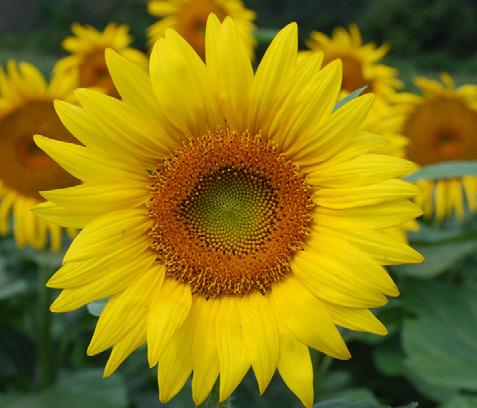
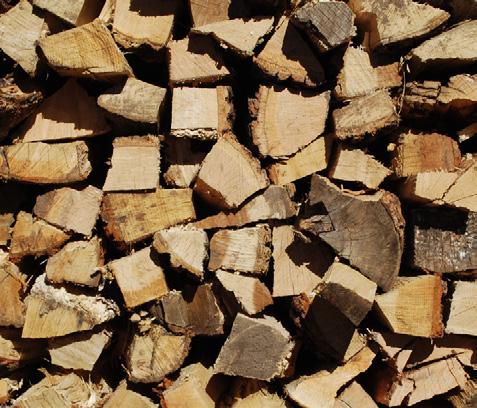




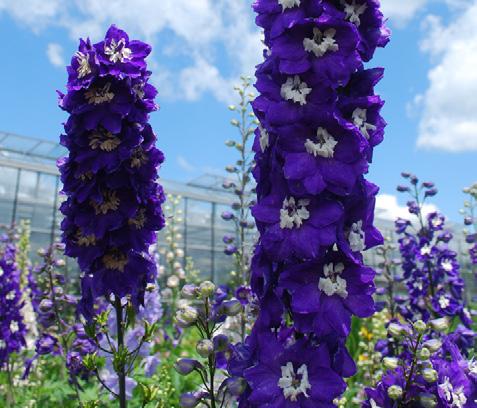
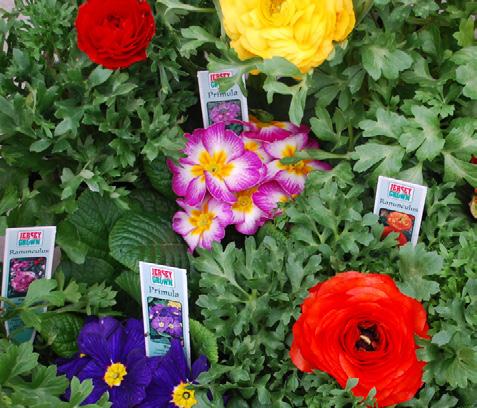


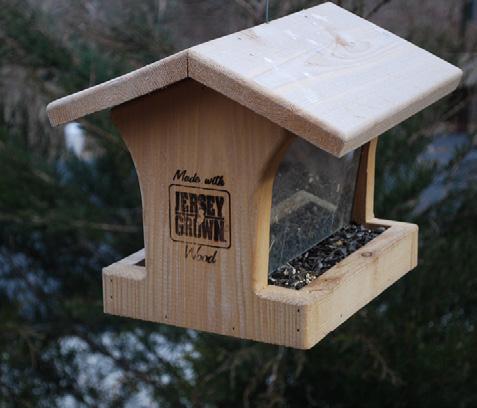






As the month of May arrives with warmer weather, more time is spent outdoors. Growing Gardeners have a message to share. I include this in my garden and environmental lessons... “Thank you for NOT littering. Participate in Litter Clean Up activities and engage youth!”
Broken glass should be picked up only by grownups and collected in a hard bucket rather than a trash bag to avoid injuries. Recyclable items should be separated.
plastic gets caught near the stomach opening and the sea turtle starves to death, slowly.
The scouts say, “Leave no trace behind.” In some parks and public places where there are no public trash cans, their rules are, “Carry in... Carry out.” It means just that. What you carry in, you must carry out, including your own trash. Use reusable bags instead of plastic bags. Wash and clean bags as needed. Always carry a Litter Bag! Straws are deadly to birds and other animals that eat them thinking they are worms. Bottle caps are another plastic item mistaken for food by wildlife, causing choking and death.



Litter causes problems with wildlife, plants and our neighborhoods. Types of trash are listed on the Marine Debris Timeline of Biodegradation posted by the Environmental Protection Agency (EPA.) Plastic trash can eventually leach chemicals into the soil, harming plant life. Wildlife may become entangled or trapped in litter. Litter lasts longer than you think. Photodegradable sixpack rings may last six months. Styrofoam and tin cans last 50 years. Animals may eat indigestible trash. Some types of litter last for hundreds of years. Aluminum cans may last 200 years. Plastic bottles and disposable diapers last 450 years Be a smart shopper and look at the packaging when choosing to make a purchase.
Plastic in general never really goes away. It breaks down into tiny pieces of microplastic. The World Wildlife Fund sponsored a study that determined that the average person consumes the equivalent of a credit card (5 grams) of microplastic a week that exists in food eaten.
No one wants to see their garden or neighborhood littered with trash. Children can be taught to, “Always leave a place cleaner than you found it.” Organizing a Litter Clean Up is one way to take positive action. Volunteers should wear garden gloves and use metal grippers.
Wildlife with a keen sense of smell often find trash cans and end up someplace where they should not be. Other animals’ sleep habits may change as they seek food and find it often when they should be asleep. The raccoon may adapt and change normal habits when he finds food sources during the day such as in a picnic area. Normally nocturnal, a raccoon may make it a habit to wake up in the middle of the day to search and grab a snack carelessly left accessible. They might find cat food on a deck. I watched a raccoon climb onto a picnic table one morning, grab a jar of strawberry jelly, unscrew the lid, and eat the entire contents before scampering back into the woods to sleep off the rest of the day. Another raccoon used a doggie door to reach the kitchen trash inside the house. Some wildlife is opportunistic and remembers where food is found... likely to return.
Bears frequent places where food is easily accessible. Trash can lids need to be tightly secured with bungee cords, though some bears have ripped those off anyway. It’s best to wait to put out the trash on the morning it will be collected. Use reusable travel mugs or washable water bottles instead of buying cased of bottled water. Use washable storage containers instead of plastic bags. Plastic bags that end up in a river are carried downstream, and may enter estuaries and the ocean where sea turtles mistake plastic for jelly fish. Sometimes the
One afternoon, when I was sitting at a picnic table near the coast, a seagull landed beside me, landing on one foot. The ankle on the other leg was tightly entangled in monofilament fishing line cutting off the circulation. Monofilament fishing line is deadly to marine life and birds because it lasts 600 years. It ends up as microplastic.
Teach children to be environmentally aware Growing Gardeners. New Jersey has a unique not-for-profit organization that manages funds for municipalities and counties in New Jersey to organize town litter clean ups and engage youth in anti-litter educational programs and activities. For info go to New Jersey Clean Communities www.njclean.org. All ages are teachable and can strive to reuse and repurpose things to reduce waste but most important is to “Leave a place cleaner than you found it and Never Litter.” For today, for tomorrow... always!
Editor’s Note: Diana is an Environmental Educator with award-winning programs for all ages who has been teaching since 1975. She can be reached at dianadove13@gmail.com She currently co-teaches, “Wildlife & Litter” programs with her husband Mike that are free to NJ groups when sponsored by Clean Communities. This includes guided nature walks, pond studies, education booths at town festivals, and outdoor programs for youth & adult garden clubs, schools, camps, libraries, and service organizations with a message about not littering. She is a former Sr. Naturalist for Somerset Co. Parks. In October, 1996 Diana founded a schoolyard, wildlife habitat garden at Memorial School in Washington Boro, Warren County, NJ. Please ‘Like” the FB page of the Karen Nash Memorial Butterfly Garden. Diana volunteers as Youth Chair on the Bd of the Garden Club of NJ and is a First Place National Winner of the NGC Youth Leader Award. She has a BS in Forestry & Wildlife Mgt, with a concentration in Biology, plus a BA in Communications from Va Tech.

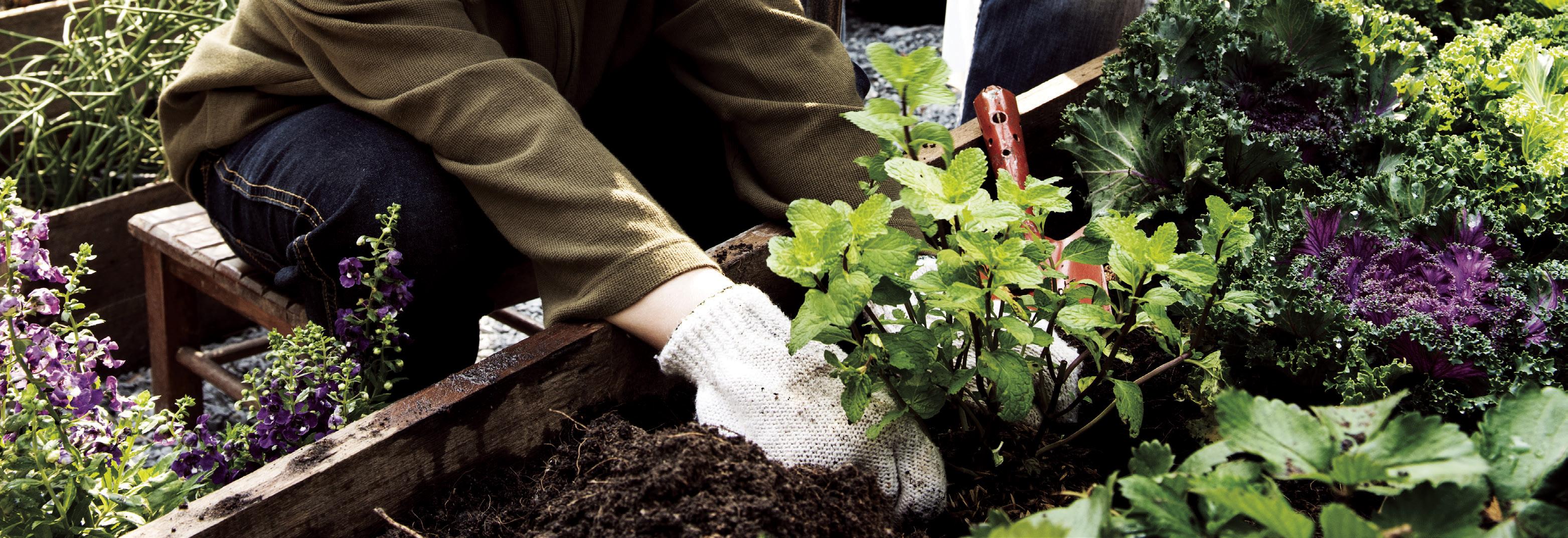

How often do we associate a relative, a friend or perhaps even a person we never knew with a plant? The plant need not be overly showy, but somehow the sight or mention of the plant brings forth memories of that individual. For me it happens all the time and the memories provide a lot of joy while I garden!
For some plants, the name honors a person and I begin to wonder about that person’s life or what they did to receive this honor. Such is the case of Claytonia virginica, an attractive spring ephemeral befittingly called Spring Beauty!
Claytonia is a relatively small genus with 33 species native to North and Central America, along with parts of Asia. It is a member of the Montiaceae, often known as the Minor’s Lettuce Family. The rather unusual family name comes from Montia perfoliata (now Claytonia perfoliata) that is commonly called Minors Lettuce. Native to a large region of Western North America including California, minors during the days of the gold rush prepared and ate the plant much like lettuce to prevent scurvy.
As with so many plants, I long suspected Spring Beauty had an interesting story to tell about its namesake, if only plants were
The gradual emergence from dormancy and into the growing season remains a favorite time of year for many. The warmer, longer days trigger plant buds to break through warming soil. I always applaud a gradual progression of this natural, however annually varied process.
Typically, the longer this process is delayed, the less the potential of late season frost damage. Blooming periods of early flowering plants are typically longer if the warming is gradual.
The still cool, yet warming weather is an excellent time to perform many tree and plant services. With the lack of foliage, structural issues, the interplay or competition between neighboring plants, potential site and future pest problems can possibly be detected and measures applied to correct them. As many arboricultural services are physically demanding, this season’s cooler temps reduce the strain, while increasing efficiency and productivity.
Although not a severe winter, the period of dormancy remains a long one, from leaf drop in late October to leaf emergence in April.
The beauty of this season, its warming air, and the pastel colors of a new life springing forth stir great activity amongst many connected

more forthcoming! Claytonia was named in honor of John Clayton (1694/5-1773). Clayton studied law and became the Clerk for the Glousester County Court, a position he held from 1720 until his death.
Clayton also had a strong interest in plant exploration, possibly stemming from his friendship with the English naturalist Mark Catesby (1683-1749). In 1734 Clayton sent a substantial number of dried specimens to Catesby, who in turn shared them the Dutch botanist Jan Gronovius (16901762). Overwhelmed by the sheer number of specimens, Gronovius asked the Swedish botanist Carl Linnaeus (1707-1778) to help describe and author the plants. To Gronovius’s credit, he honored Clayton by naming Spring Beauty

in his honor, which Linnaeus adopted when he formally named the plant Claytonia virginica in 1753. The species epithet of virginica honors the colony where the plant was originally found. Although found in colonial Virginia, Claytonia virginica is native to a much larger region, stretching from Georgia to Nova Scotia, west to Texas and Ontario. Plants grow from a small corm which is edible and has a taste similar to that of Chestnuts. Come April, the plant produces 1 or 2 slender grass-like leaves at the base and usually 1 along the flower stem. The leaves are roughly ¼” wide and stretch from 6-10” tall. Come early to mid-April through May, abundant clusters of white or pink blushed flowers appear
with each plant producing 5-25 flowers. The ½-¾” wide, starshaped flowers consist of 2 cupshaped sepals that split open to reveal 5 oblong petals, a whirl of 5 stamens and a central pistil with a tripartite style. The petals display warm to pale pink stripes running the length of the petal that serve as nectar guides for visiting pollinators. The 5 stamens are tipped with pink anthers that only release pollen during the first day of bloom. During the subsequent 6-7 days of bloom, the now mature stigmas are receptive to pollen. As a protective measure, flowers only open during sunny days and close at night or on rainy days.
The flowers are rich in nectar and provide food for numerous bee and fly species. Following the
to our natural world. As people emerge from their long winter naps, arborists, landscapers, and nursery men are solicited for consultations, leading to typically the busiest time in the tree business. The time is prime for many arboricultural services, especially pruning and planting. Plant healthcare technicians are active with initial site visits, in many cases associated with horticultural oil applications for pre-emergence protection prior to bud emergence. Spring also affords an opportune time to prescribe fertilizing trees and shrubs where needed. These operations along with the continued removal of dead and dying Ash trees equate to an incredibly busy time of the year for those in the tree industry. I truly am hopeful that this tree decline does not continue, with the Beech trees being next on the list.
Beech leaf disease (BLD) is in its early stages in our wooded landscape. How will this affect Beech groves and our forests? Beech are very prolific nut trees with many mammals feeding upon their nuts. The potential loss of Beech trees would have a huge impact upon our forest ecosystem.
Early signs of BLD include dark stripes or bands between lateral veins of leaves in the spring.
Beech tree saplings infected with BLD usually die within five years of infection. Mature trees tend to take several years to die of the infection.
BLD causes significant dieback, decline, and death of beech trees. BLD was first detected in the Cleveland, Ohio area in 2012. Questions swirl through the spring air. How will this wet year affect plants? Will leaf fungi run
lengthy bloom period, the foliage lengthens to upwards of 8-12” tall before withering as the plant enters dormancy in June. Plants readily increase through ample seed set and are frequently seen in NJ woodlands. Spring Beauty mixes well in the garden with various sedges such as Carex appalachica, the blue flowered Jacob’s Ladder (Polemonium reptans), Twinleaf Jeffersonia (Jeffersonia diphylla) and various Trilliums. Hardy in zones 3-8, plants prefer light shade in humus rich soils with a slightly acidic pH.
Although I clearly never knew John Clayton, I am thankful for his ardent efforts in searching for and sharing plants, especially Spring Beauty. Hopefully, I am not alone in remembering family, friends and even ‘friends’ never met while gardening!
Editor’s Note: Bruce Crawford is a lover of plants since birth, is the Manager of Horticulture for the Morris County Parks Commission, and a Past President of the Garden State Gardens Consortium. He can be reached at BCrawford@ morrisparks.net
in Alexandria Twp., New Jersey in early October 2024. Dubbed Arbor Camp, this is sure to be an awesome family friendly, hands-on learning event, encompassing several days. This event will culminate in our hosting the Duel on the Delaware and interchapter team arborist challenge.
More exciting news regarding this is to follow.
rampant? How devastating will BLD be? How will the Beech tree fare? Will nature and this season’s weather offer some control? Where will Spotted Lantern Fly populations be? Will moisture fluctuations occur again?
These concerns will soon be answered, hopefully favorably with a good growing season in store for 2024!
At the New Jersey Arborists of the International Society of Arboriculture (NJAISA), we are a very active organization. This year our organization celebrated Arbor Day in Camden. We will then host our tree climbing championship, the New Jersey Tree Climbing Competition (NJTCC), in Cadwalader Park in Trenton on June 8. We are currently creating and planning an exciting fall event to be hosted at Camp Tecumseh
In an effort to pay back or pay forward towards fueling my/our climbing passion, I will be busy helping with climbing competitions, “Keeping the stoke alive,” as my friend and current North American champion. Jeff Inman. coined it. I’m enrolled to help at the MidAtlantic TCC in Maryland and the North American Open Masters in Charlotte, NC, the Penn Del TCC on May 17-18, and hosting our NJ TCC on June 8th.
Spring is the season of renewal, regrowth, and climbing!
Editor’s Note: Bert Kuhn is President of the New Jersey Chapter of the International Society of Arboriculture and CO/Owner of Action Tree Service (# NJTC768009), based out of Watchung, NJ. He can be reached at 908756-4100
There are many ways to bring fragrance to the garden. Many plants have amazingly fragrant flowers, while others have fragrant foliage and other flower parts.
Magnolias are considered the “queen of flowering trees.” This is in part due to the amazing abundance of early spring flowers, but also because many of them have great fragrance as well. The saucer magnolia, Magnolia x soulangeana reaches 50’ tall and wide at maturity, and depending on the part of the country blooms in early April and even earlier in the southern and western states. The flowers can be pink, white or shades of purple and most cultivars have a sweet fragrance. One of the parents of the saucer magnolia is the Yulan magnolia, Magnolia denudata which has upright, white, chalice-shaped flowers and good fragrance. Native to the coastal plains from Massachusetts to Florida is the sweetbay magnolia, Magnolia virginiana var. australis The leaves are narrow and silver on the undersides and for all intents and purposes resemble the leaves of the bay laurel, Laurus nobilis. In May and then sporadically through the spring and summer, intensely lemony fragrant flowers are borne. Another native magnolia with equally fragrant flowers

is the Southern magnolia, Magnolia grandiflora There perhaps is not a more iconic southern tree than this magnolia. The evergreen leaves are large, elliptic, and glossy on the surface and the undersides can often have an attractive brown “fuzz” (indumentum). In midsummer, large, extremely fragrant, open-faced flowers appear throughout the canopy. For large tropicallike foliage in the garden, consider the Ashe magnolia, Magnolia macrophylla subsp. ashei. This native magnolia is characterized by large two-foot long leaves. In May, large open-faced flowers with a purple blotch in the center are scattered throughout the canopy. These fragrant flowers will perfume the entire garden.
There are dozens of highly ornamental and fragrant shrubs. The viburnums are a popular flowering shrub. The Korean spice viburnum, Viburnum carlesii and the closely related Viburnum x juddii are grown for their
relatively compact habit and their ball-like clusters of pinkish-white flowers in mid-spring. As the name would suggest, they have a spicy fragrance. These viburnums are relatively hardy, making a great ornamental shrub through most parts of the East coast and Midwest. With similar flowers but larger in stature is the Burkwood viburnum, Viburnum x burkwoodii which can reach 10’ tall and an equal spread. It is a great plant to consider for an informal hedge and is covered in white, very fragrant flowers in the spring.
Abelia mosanensis Sweet Emotion® is a selection of the hardy abelia. This deer resistant shrub has tubular pink buds that open to a pinkish-white flower that are borne in profusion and have a jasmine-like fragrance. Hardy to USDA zone 4 it is one of the best flowering shrubs for most parts of the United States.
The tea olives, Osmanthus
USDA’s National Agricultural Statistics Service (NASS) will conduct the 2024 Maple Syrup Inquiry in the Northeastern Region. The survey will collect information from approximately 1,900 Northeastern producers. Maple syrup producers, processors and commodity markets rely on the data from this survey to make informed business decisions and help promote the industry.
“The Northeastern Region produced 3.58 million gallons of maple syrup in 2023. Vermont was the top Maple Syrup state with 49 percent of the United States’ maple syrup,” according to Charles Butler, acting director of the NASS Northeastern Regional Field Office. In 2023, NASS estimated the total number of taps across the nation at 13.4 million and total production was 4.18 million
gallons of maple syrup.
heterophyllus are grown for the evergreen, hollylike leaves. They are hardy from USDA zone 6b and higher, making it one of the best broadleaved evergreen shrubs for the Mid-Atlantic and the South. In the fall, nearly inconspicuous white flowers are borne, however they are exceedingly fragrant. Flowering can occur from September through October.
‘Goshiki’ has white, yellow, and green variegated leaves.
‘Gulftide’ is a more upright form which lends itself to being utilized as a hedge, ‘Sasaba’ has decorative and very spiny leaves, and ‘Party Lights’ has cream and pink new foliage.
Perhaps no shrub is equal in fragrance to the cape gardenia, Gardenia jasminoides. This evergreen shrub with glossy leaves will produce intensely fragrant flowers throughout the year, especially in the South and West where cold weather is not an issue. ‘Kleim’s Hardy’ and ‘Celestial Star’ are two hardier selections, and with
Survey recipients are encouraged to respond securely online at agcounts.usda.gov or by mail or fax. To ensure all participants have an opportunity to respond, NASS interviewers may contact producers who do not respond to arrange an interview to complete the survey.
All information from respondents is kept confidential, as required by federal law, and published so that no operation or producer can be identified. NASS will publish this data in the Crop Production report on June 12 and the Quick Stats database at quickstats.nass.usda. gov. This report and all other NASS reports are available at nass.usda.gov/Publications. For more information or assistance with the survey, producers can call the NASS Northeastern Field Office at (800) 498-1518.
some protection make a small evergreen shrub in zones 7-9 and will be hardy in the Mid-Atlantic states.
Fragrance is a gardening attribute that should always be considered when designing a garden. The beauty of plants is often defined by visual beauty, but fragrant flowers and foliage should always be part of the design equation.
Editor’s Note: Andrew Bunting is Vice President of Horticulture for the Pennsylvania Horticultural Society. He is one of the most recognized horticulturists in the Philadelphia, Pa., region and a highly regarded colleague in the world of professional horticulture. Bunting has amassed a plethora of awards, including the American Public Gardens Association Professional Citation, Chanticleer Scholarship in Professional Development, Delaware Center for Horticulture’s Marion Marsh Award, and the Certificate of Merit from the Pennsylvania Horticultural Society. In addition, Bunting has lectured extensively throughout North America and Europe, and participated in plant expeditions throughout Asia and Africa. Learn more at https://phsonline.org/team/ andrew-bunting
Each year, National Garden Bureau’s judging committee selects five Therapeutic Gardens to be the recipients of a Grant that will help the organization expand or perpetuate their initiatives. Those chosen will then compete via a social media voting contest by submitting a one-minute video featuring the gardens’ operations for First place, Second place, and three runners-up financial prizes. They will also be featured on National Garden Bureau’s website for national exposure.
Garden Grants are made possible by National Garden Bureau and our members, American Meadows, Ball Horticultural Co. and Sakata Seed America.
https://ngb.org/therapeutic-grant-program/

July 22 – August 16, 2024 | 9:00am – 4:15pm EDT Monday – Friday | New Brunswick, NJ
Prepare for a position in this flourishing industry by gaining foundational knowledge from experts in three major areas of grape and wine science:
Grape growing and vineyard management
Wine making
Business operations
Program Features:
Four weeks of classroom instruction, including hands-on workshops
Four-week paid winery internship
Hurry, apply by June 22th and save $500!

Atlantic County
Phone: 609-625-0056
Bergen County
Phone: 201-336-6780
Burlington County
Phone: 609-265-5050
Camden County
Phone: 856 216 7130
Cape May County
Phone: 609-465-5115
Cumberland County
Phone: 856-451-2800
Essex County
Phone: 973-228-2210
Gloucester County
Phone: 856-224-8040
Hudson County
Phone: 201-915-1399
Hunterdon County
Phone: 908-788-1339
Mercer County
Phone: 609-989-6830
Middlesex County
Phone: 732-398-5260
Monmouth County
Phone: 732-431-7260
Morris County
Phone: 973-285-8300
Ocean County
Phone:732-349-1246
Passaic County
Phone: 973-305-5740
Salem County
Phone: 856-769-0090
Somerset County
Phone: 908-526-6293
Sussex County
Phone: 973-948-3040
Union County
Phone: 908-654-9854
Warren County Phone: 908-475-6505

The Atlantic coast is a natural treasure that makes New Jersey one of the most desirable places to live in the United States. Sandy beaches, saltwater, and sunshine welcome residents and visitors to our temperate coastal paradise. However, these conditions can also create some challenges for our gardens and landscapes, especially if we are trying to grow plants that are not well adapted to this environment.
Plants growing along the coast are subject to high winds, heat and drought stress, salt spray, flooding, and infertile sandy soils. The native plant species that inhabit this coastal environment have evolved to grow in these conditions and are typically more tolerant of the many abiotic stressors that can occur. We can learn from these native plant ecosystems to understand which plants are best suited for developing lowinput ornamental landscapes in our coastal areas. By selecting the right plants for the right location, we can minimize our inputs of water, fertilizer, and pesticides, while supporting important ecosystem services like flood water mitigation, soil stabilization, and pollinator habitat.
Wind and salt spray are two major factors to consider when designing a coastal landscape because many plants will not thrive under these intense conditions. A windbreak planted with tolerant plants, such as Eastern red cedar (Juniperus virginiana) and Northern bayberry (Myrica pensylvanica) can help to shield other sections of the landscape from the impacts of wind and salt. These two plants can be found thriving in sand dunes along the NJ coastline, which is a further testament to their drought tolerance and low nutrient requirements.
Beach Plum (Prunus
maritima) also grows well throughout the coastal areas of NJ. It is drought and salt tolerant and produces early blooms that attract bees and butterflies. Beach plum jam is a real treat that can be made from the fruits of this native edible landscape plant. Island Beach State Park even hosts a Beach Plum Festival every year to celebrate this important coastal plant.
Grasses are another important part of the coastal landscape because they help to stabilize sand dunes and sandy soils. American beachgrass (Ammophila breviligulata), and coastal pancigrass (Panicum amarum) are the dominant native grass species that grow in sand dunes. However, while their strong root systems and spreading rhizomes (underground stems) are excellent for holding dunes together, they can also spread in your landscape, so just be aware of that if you are choosing to include these species in your yard. Switchgrass (Panicum virgatum), big bluestem (Andropogon spp.), and little bluestem (Schizachyrium scoparium) are all excellent choices for native ornamental grasses in a coastal landscape that are less likely to spread.
On their fall journey from Canada to Mexico, migratory monarch butterflies travel along the New Jersey coastline. One of the most important coastal plants for supporting these migrating butterflies is seaside goldenrod (Solidago sempervirens). This fast-growing perennial is native to New Jersey and has yellow flowers that bloom from July through October, providing habitat, pollen, and nectar for monarchs and other pollinators well into the fall.
These are only a handful of the many native coastal plants that thrive in our state and can be incorporated in our
ornamental landscapes. Not only do they support important ecosystem services, but they also impart a unique character to the landscape that makes it distinctly a Mid-Atlantic coastal environment. There is nowhere else in the world that looks like this, and we have an opportunity to plant our landscapes in a way that reflects this character, while helping to improve the biodiversity and ecological function of the entire coastline.
The NJAES Nursery Program is currently trialing native plant species and cultivars at our research farms to evaluate which plants are best suited for use in New Jersey’s ornamental landscapes. Propagation trials along with educational programs and field tours are further supporting the increasing number of nurseries and landscape professionals who are growing native plants.
If you are looking for coastal landscape plants, you can find many of them at local independent garden centers throughout the state, as well as at one of the spring plant sales being offered by Rutgers Master Gardeners. This year’s Monmouth County Spring Garden Days plant sale will be held on May 17 and 18 at the Monmouth County Agriculture Building, 4000 Kozloski Road, Freehold, NJ, and features horticultural presentations, guided tours of their extensive gardens, a composting demo, and general gardening Q&A by certified Rutgers Master Gardeners.
While there are specific elements to consider when designing and maintaining a resilient coastal landscape, choosing well-adapted plants is a great first step. There are many excellent native plants to choose from that will beautify your coastal ornamental landscape while supporting important ecological functions.
Cumberland County Master Gardeners
Wheaton Village
1501 Glasstown Road, Millville, NJ Saturday, May 4
Middlesex County - Rutgers Gardens
Rutgers Gardens Spring Plant Sale
130 Log Cabin Road, New Brunswick, NJ
Friday, May 3rd through Sunday, May 5th
Essex County Master Gardeners
Presby Memorial Iris Gardens
474 Upper Mountain Ave, Montclair, NJ Friday, May 3 and Saturday, May 4
Garibaldi Hall
621A EagleRock Ave Roseland, NJ Saturday, May 11
Monmouth County Master Gardeners
Monmouth County Agriculture Building
4000 Kozloski Road, Freehold, NJ
Saturday, May 17 and Sunday, May 18
Union County Master Gardeners
Trailside Nature and Science Center
452 New Providence Rd, Mountainside, NJ Sunday, May 19
The FRST project partners are proud to announce the nationwide release of the FRST (Fertilizer Recommendation Support Tool), a decision-aid that provides an unbiased, science-based interpretation of soil test phosphorus and potassium values for crop fertilization.
The FRST project is a collaboration of over 100 soil science and agronomic professionals representing nearly 50 universities, four divisions of the USDA, several not-for-profit organizations and one private sector partner. This diverse partnership underscores the collective effort and expertise invested in the development of FRST.
Rutgers Cooperative Extension is represented on the project by Stephanie Murphy, director of Rutgers Soil Testing Laboratory, and Joseph Heckman, extension specialist in soil fertility, Department of Plant Biology.
Murphy noted that “we are extremely excited about the launch of the decision support tool. FRST was developed in response to the pressing need to harmonize soil testing across state boundaries. It represents an improvement in our ability to evaluate soil test correlation.”
The new web-based tool represents a significant advancement in soil testing for phosphorus and potassium and nutrient management that uses data from across the U.S. with the hope of potentially saving
farmers millions of dollars annually while reducing excess nutrient losses to the environment.
Deanna Osmond, soil science researcher at NC State University, is one of the group’s leaders.
“Until now, soil fertility faculty in each state worked independently,” Osmond said. “But for farmers who work across state lines, it’s difficult to compare or assimilate multi-state guidelines. Our goal is to improve the accuracy of nutrient recommendations through independent, scientificallydeveloped nutrient management best practices that farmers can believe in and adopt.”
Currently, the FRST provides critical phosphorus and potassium soil test values. Critical soil test values indicate where there is no expected yield increase from phosphorus or potassium fertilizer application. In the next phase, the FRST will provide researchbased phosphorus or potassium rate response information to assist farmers in selecting the minimum fertilizer rate expected to produce maximal crop yield.
The current version (FRST v1.0) includes data from nearly 2,500 phosphorus and potassium trials for 21 major agricultural crops, with the majority as corn and soybean.
The FRST includes a map of the US that shows the location of phosphorus and potassium trials represented in the database and can be used to identify where the need for additional research data is
greatest.
The database was constructed from both historical and current research data and includes trials from 40 states and Puerto Rico. The team has plans to expand to other crops, cropping systems, and other nutrients, such as sulfur.
Key Features of FRST Include:
• Data-Driven: FRST utilizes a dynamic database of soil test correlation data that is constantly updated to improve testing confidence.
• Crop Specific: The database currently covers 21 major commodity crops.
• Geographically Diverse: Includes published and unpublished trial data from 40 states and Puerto Rico.
• Unbiased: Blended data removes political and institutional bias in soil test interpretation.
• Scientifically Sound: Data represents a minimum dataset that provides reliable outcomes.
Nathan Slaton, soil science researcher at University of Arkansas and a leader on the project, noted that “The FRST project has accomplished two really important objectives to advance phosphorus and potassium management for crop production. The first was developing a national database to archive soil test correlation and calibration research ensuring that research information that supports crop fertilization recommendations is not lost as scientists retire. The second is providing a tool that
anyone can use to review the research results relevant to their crop, soils, and geographic area to check their soil-test-based fertilizer recommendations. “
Hosted in a neutral space with common access, FRST fosters collaboration and innovation in soil fertility research, paving the way for future advancements in nutrient management.
Greg Buol of NC State University who has provided database and programming support stated, “the design of FRST has always been focused on the end user being able to easily use the tool and understand the results.”
“We believe that FRST will not only benefit farmers by improving farm economics and conservation practices but also contribute to global sustainability,” concluded Murphy.
For more information about FRST and how it can transform nutrient management on your farm or in your organization, visit https:// soiltestfrst.org and click on “Tool”.
Funding for the FRST project has been provided by the USDANRCS, including the Conservation Innovation Grants, USDA-ARS, and USDA-NIFA and OCP North America.
Contact Stephanie Murphy, director of Rutgers Soil Testing Laboratory, slmurphy@njaes. rutgers.edu or Joseph Heckman, extension specialist in soil fertility, Department of Plant Biology, heckman@njaes.rutgers.edu.

Recently, I was listening to a podcast with a large beef producer out in the Mid-West. During the interview, this producer, who already had an extremely large operation, talked about their plans for expansion. He did not talk so much about increasing the amount of beef that they would produce, but about trying to market their beef directly to retail consumers through some type of home delivery program. They wanted to try and grow the public’s awareness of their brand, and hopefully, capture the retail mark-up for themselves.
On paper, it sounds like a good plan. Afterall, the retail price for beef, which the farmer would realize minus any expenses of course, is probably more than double or triple what they would receive if they sold it to a large beef packer, who then sold it to a retailer, who then sold it to the consumer. Plus, the beef producer would not have to be dependent upon wholesalers and retailers selling their products for them. Can it work? Absolutely. Countless farms across the country have successfully expanded their operations by marketing

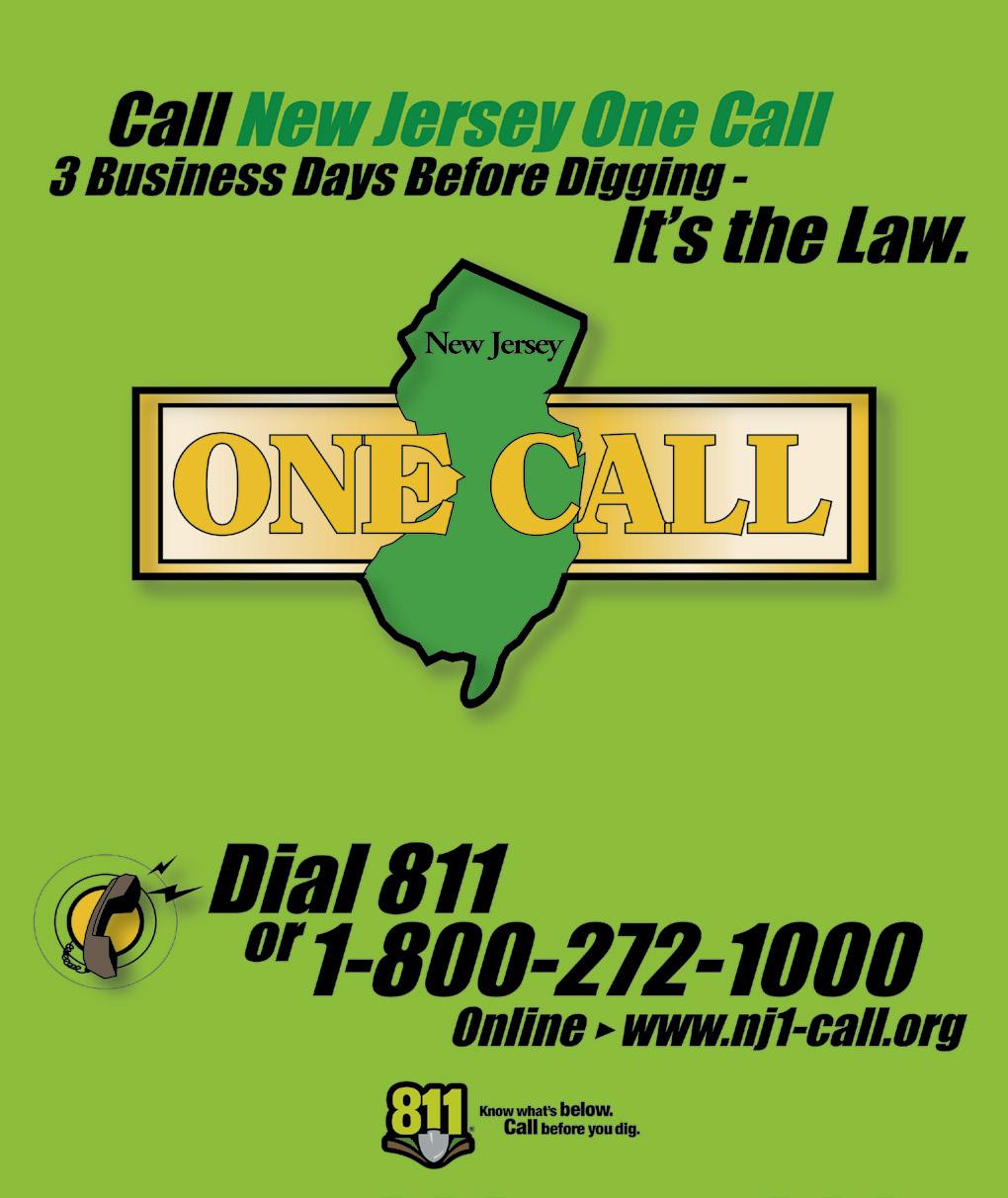
their products directly to the consumer. But is it a no-brainer?
Hardly.
As someone who has a little experience in marketing farm products directly to consumers, I can see both sides of this issue. I fully appreciate the idea of farmers controlling as much of their sales and marketing as possible. Why spend years growing a product, and then turn it over to someone else to sell and deliver it for you? Or take it that “Last Mile” so to speak. In many cases, growers have very little recourse if things do not go well during the sale and marketing of their products. You can grow the best crop in the world, but what good is it if you can’t sell it for more than it costs to grow? And if a
producer is getting subpar sales results year after year, they may have no choice but to look for other opportunities for the sale of their products. But selling their own products directly to consumers can present a very different set of challenges than what many growers are used to. I know that in our case, we not only need good weather to grow our crops, but we need good weather to sell them as well. Take our “pick your own” apples for example. Growing a nice crop is only half of the battle. The key to a successful apple crop for us is being able to sell those apples. And for “pick your own,” we sell the large majority of our apples on weekends in September and October. But if
it rains on these weekend days, we suffer the consequences of decreased retail sales. Sure, we can and do market our apples through other channels, but we have already done and spent a great deal to prepare for this type of marketing. And to pivot strategies so late in the process is not advantageous for anyone.
Another reason direct sales can be difficult is that it requires a completely different skill set than just growing the product. It is possible to hate dealing with people and to be a miserable person, but still be an excellent grower. But if a farmer has any aspirations of selling their products directly to consumers, they had better enjoy dealing with the public, or at the very least, hire some
great people who do. If they do not, the public will quickly find someone friendlier to deal with. Also, while revenues should increase by selling directly to the public, growers should count on expenses increasing as well. And if these expenses are not managed appropriately, they can quickly get out of control and place undo strain on the operation. As for Holidays and weekends, they are no longer when the grower can find some rest and relaxation, but are when most direct marketing sales take place. Best wishes and good luck!
Editor’s Note: Peter Melick is co-owner of Melick’s Town Farm in Oldwick and a 10th-generation New Jersey farmer. Peter is a member of the Tewksbury Township Committee, Hunterdon County, NJ. He also served as a director for the New Jersey Farm Bureau and is a past president of the New Jersey State Board of Agriculture. Peter has also been featured on NJN, News 12 New Jersey and on the Fox Business Network.

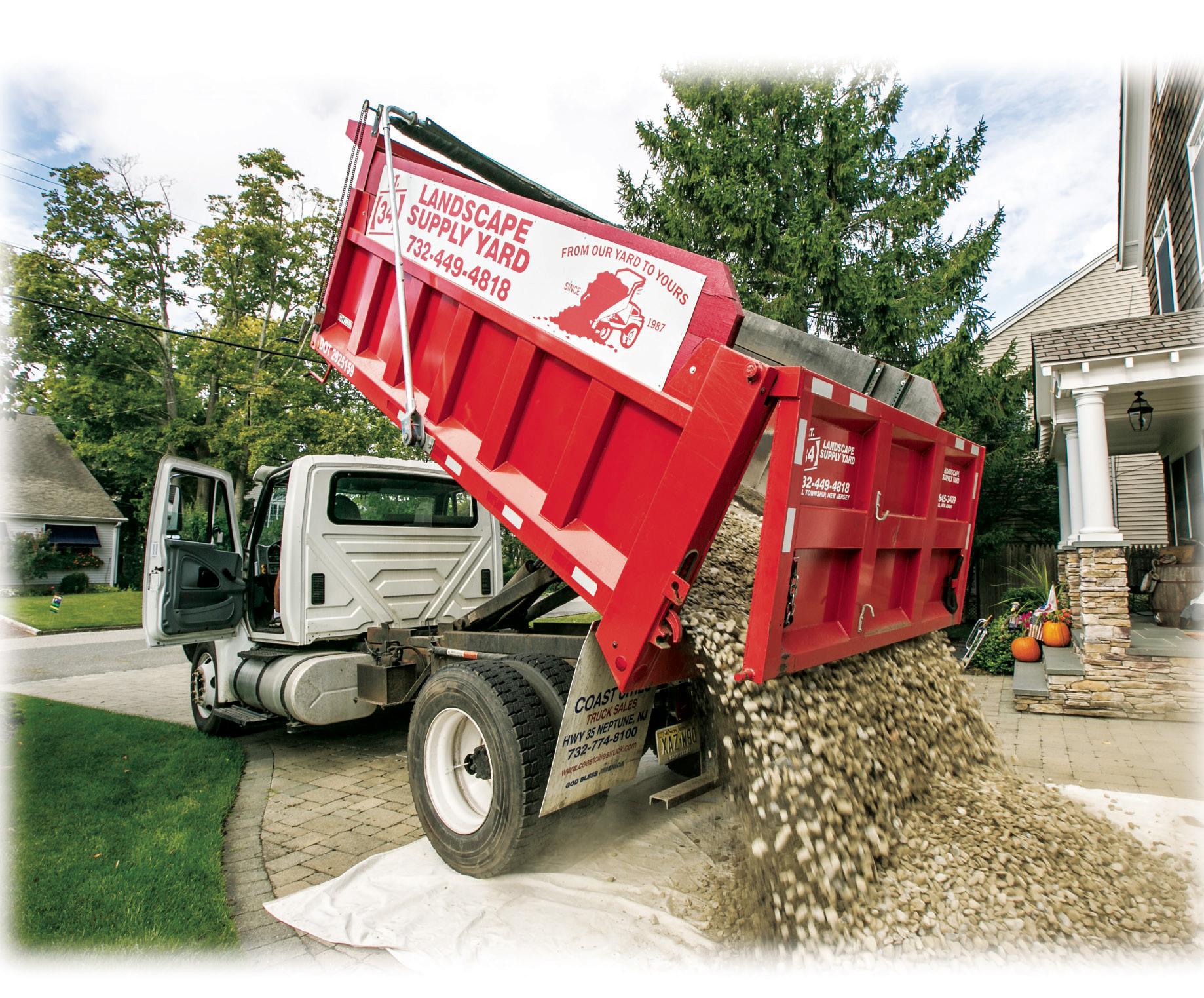







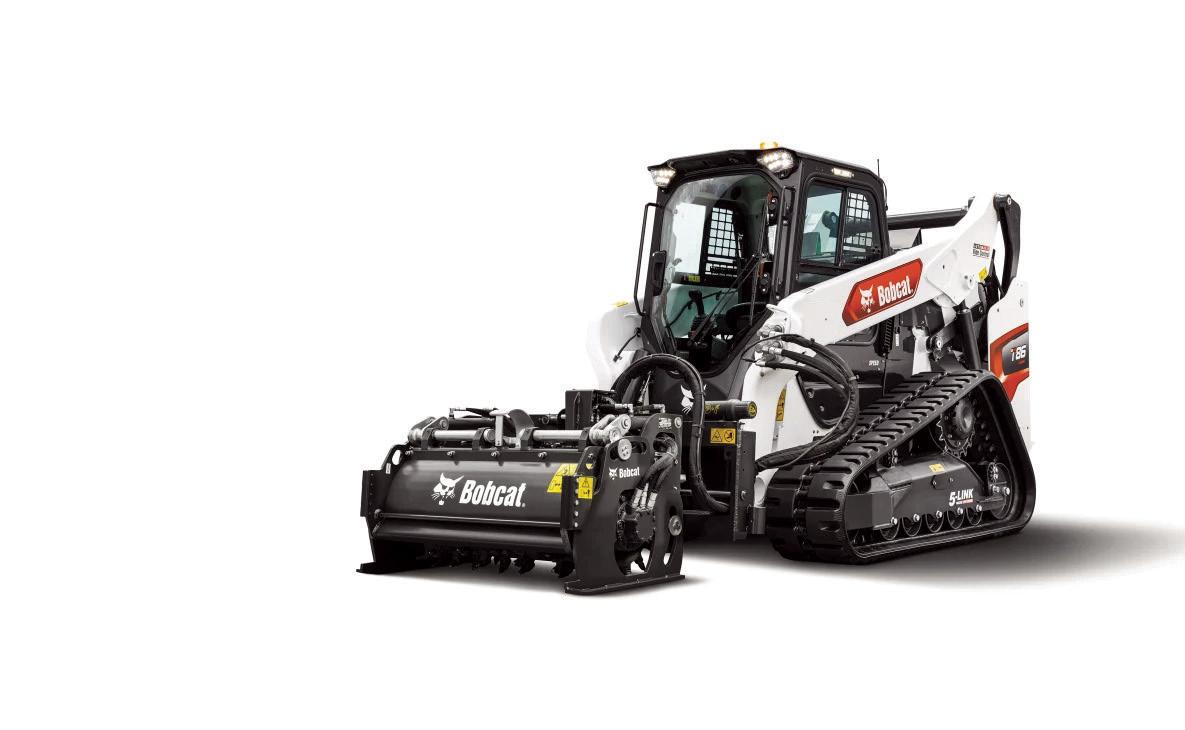



GARDEN CENTER AND FARM MARKET
SERVING YOUR GARDENING NEEDS FOR 6 GENERATIONS
OUR EXPERIENCED STAFF CAN ANSWER YOUR GARDENING QUESTIONS AND PROVIDE GROWING TIPS
Wholesale & Retail
Fruit Trees
Bird Baths
Fertilizers
Pottery
Garden Accessories
Gift Cards
• Annuals
• Perennials
• Trees & Shrubs
• Ground Covers
• Rose Bushes
• Herbs
• Vegetable Plants
Stone - Mulch - Soil Bagged & Bulk
Mon. - Sat. 7-7
Sunday 7-5
First, thank you all for the amazing feedback about the Landscape New Jersey 2024 Trade Show and Conference. The article and photos featured in last month’s issue are a source of pride for us and capture the buzz of the trade show floor. But it’s on to bigger and better things and I have some exciting news to announce!
In the ever-evolving digital landscape (see what I did there?), a strong online presence is pivotal for organizations to thrive. Recognizing this need, the New Jersey Landscape Contractors Association (NJLCA) has unveiled its brand-new website, set to change the way landscape professionals engage and interact within the industry. With a focus on streamlining user experience and enhancing functionality, the redesigned platform promises to be a game-changer for members and visitors alike.
At the forefront of the website’s transformation is its newfound streamlined interface. Navigating through the site is now more intuitive and seamless, ensuring users can access information effortlessly. The clutter-free design allows for quicker access to essential resources, saving valuable time for busy professionals.
One of the standout features of the revamped NJLCA website is its robust event calendar. Landscape professionals can now stay informed about upcoming events, workshops, and seminars with ease. This comprehensive calendar serves as a valuable resource for members to network, learn, and stay ahead of
As a Family Owned Business we’re Dedicated to Providing the Personal Service and Expertise that’s too often Missing in the Big Box Stores

industry trends.
Further, the inclusion of galleries showcasing past events and service projects adds to the user experience. Visitors can browse through images and videos, gaining insight into the NJLCA community’s exciting activities and accomplishments.
A highlight of the new website is the addition of the “Find a Contractor” and “Find a Vendor” sections. These directories allow both consumers and industry professionals to connect with reputable service providers and suppliers, fostering collaboration and driving business growth.
Incorporating member feedback, the NJLCA website now features a dedicated reviews section. This platform allows users to share their experiences and insights, further enhancing transparency and trust within the community.
Integration with social media platforms increases the association’s online presence, facilitating seamless
communication and engagement with members and stakeholders. By harnessing the power of social media, NJLCA can reach a broader audience and encourage meaningful connections within the industry.
A notable improvement in the redesigned website is the consolidation of information into fewer pages. Despite this consolidation, the depth of information remains robust, providing visitors with comprehensive insights into the association’s initiatives, programs, and services.
The streamlined menus make navigating the website a breeze, ensuring users can quickly find what they’re looking for without getting lost in a maze of links and pages.
For aspiring outdoor living industry professionals, applying for scholarships or entering the Landscape Achievement Awards has never been easier. The revamped website simplifies the application process, guiding applicants through each step
with clarity and ease.
The introduction of a new search feature further enhances usability, enabling users to quickly locate specific information or resources within the website’s vast repository.
Member projects take center stage throughout the website, showcasing the talent and creativity of NJLCA’s diverse membership. From stunning landscape designs to innovative sustainability initiatives, these projects serve as inspiration and a testament to the association’s dedication to excellence.
In conclusion, the launch of the new NJLCA website marks a significant milestone in the association’s commitment to serving its members and advancing the landscape industry. With its streamlined interface, enhanced functionality, and wealth of resources, the revamped platform is poised to become the go-to hub for outdoor living industry professionals in New Jersey and beyond. Whether

it’s connecting with peers, accessing valuable resources, or showcasing their work, members can now do it all with ease, thanks to the innovative features of the new NJLCA website.
Editor’s Note: Gail Woolcott is the Executive Director for the New Jersey Landscape Contractors Association.
Gail received the New York State Turf & Landscape Association 2022 “Person of the Year” award on December 1, 2022. Gail also received a proclamation from the Westchester County, New York Board of Legislators proclaiming December 1, 2022 as “Gail Woolcott Day” in Westchester County. Gail has also been presented with a community service award from the Borough of Fairview, New Jersey for her assistance in leading the 9-11 Memorial Park project and the Legislative Champion of the Year award from the Federation of Employers and Workers of America. She can be reached at 201-703-3600 or by emailing gwoolcott@ njlca.org.
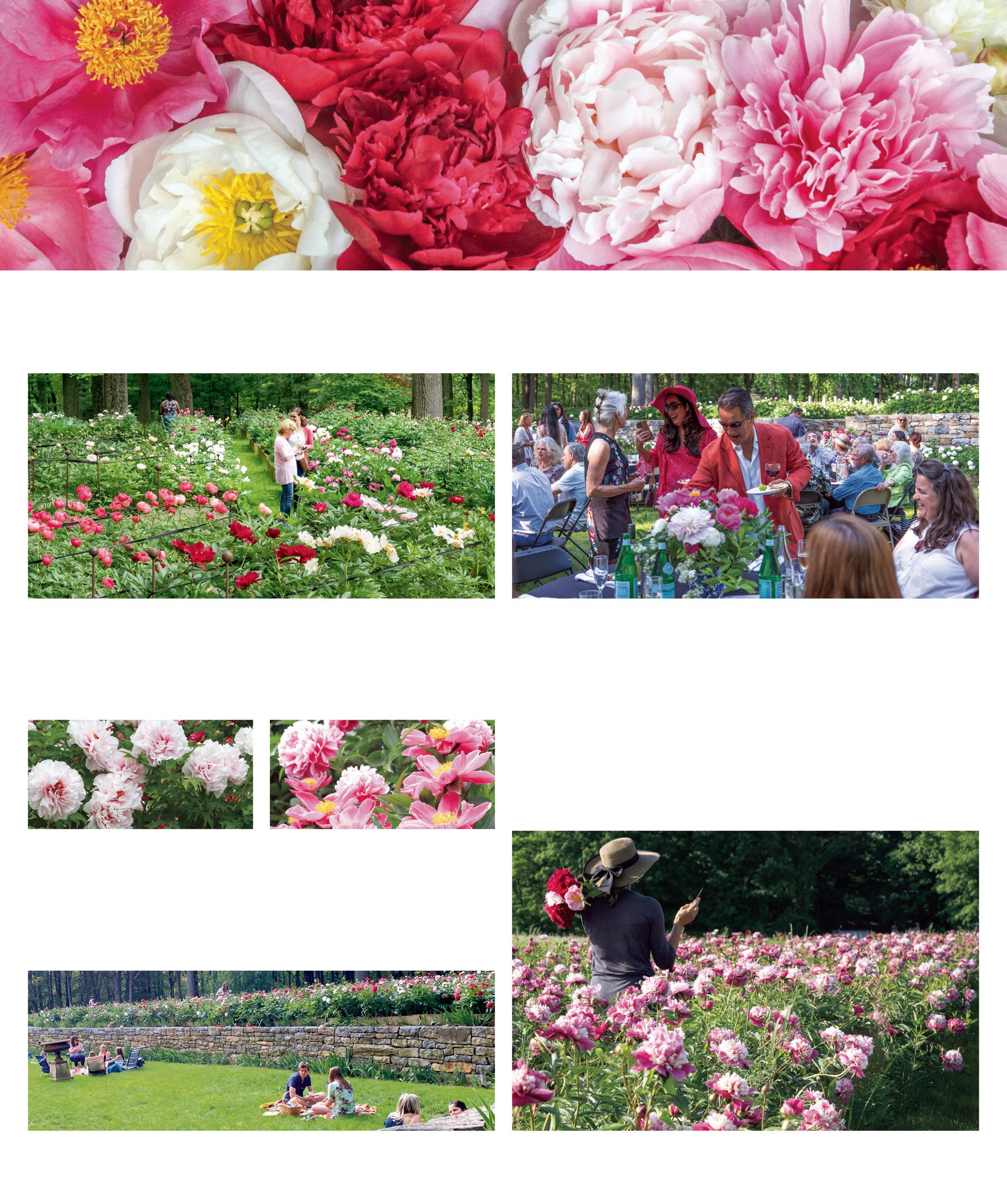
In addition, the Office of the Secretary directs and coordinates the development and analysis of agricultural policy and department budget for the Secretary and the State Board of Agriculture. The Office coordinates the department’s legal and legislative services and rulemaking functions, serves as the state’s liaison for USDA agricultural disaster matters and directs departmental efforts to support the Governor’s statewide policy issues.
The Office of the Secretary also handles relations with agricultural and other organizations, outreach to news media and the public, liaison to the State Legislature and United States Congress, the Ag in the Classroom Program
and other state and national agricultural organizations. The New Jersey Department of Agriculture was created by law on March 29th, 1916, to form a single agency to promote, protect and serve New Jersey’s agricultural interests.
Alva Agee was the first New Jersey Secretary of Agriculture.
Since 1998, Wengryn served with the New Jersey Farm Bureau, where he worked closely with farming communities. His field work included the direct marketing of farm products as well as oversight on issues such as sales taxes. Wengryn’s work at the Farm Bureau spanned ornamental horticulture, land use, forestry, and equine and other livestock issues. From 2002
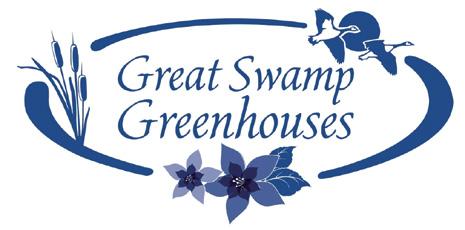
(Continued from page 4)
through 2004, he served as Confidential Assistant to Charles Kuperus, the Secretary of Agriculture for the State of New Jersey, where he coordinated the development of industryspecific action plans to improve the economic viability of New Jersey’s varied agriculture sectors.
Since 2009, Wengryn has represented the private agriculture sector on the New Jersey Industry Advisory Council at the State Office of Homeland Security and Preparedness, ensuring concerns of the agricultural community are considered in State emergency response plans. This work was critical for keeping agricultural businesses open and running during the recent COVID-19 public health emergency. Wengryn
has been recognized for his service to the Equine Industry by receiving the New Jersey Horse Person of the Year award in 2021.
Wengryn grew up in the Neshanic Station section of Branchburg Township, and his interest in agriculture and horticulture began when he was helping on the Wengryn Family farm, a dairy and field crop operation in Hillsborough, New Jersey. As a youth, he worked with his father, Myron, growing and selling pumpkins and pick-yourown strawberries, as well as growing and selling tomatoes to area delis in the summer.
Wengryn is a resident of Trenton, New Jersey, residing in the Mill Hill Historic district where he maintains an 1860 brick
Victorian home, a yard and garden and keeps bees. He is a 1986 graduate of Delaware Valley College (University) in Doylestown, PA with a B.S. in Ornamental Horticulture.
Editor’s Note: Tom Castronovo is executive editor and publisher of Gardener News . Tom’s lifelong interest in gardening and passion for agriculture, environmental stewardship, gardening, and landscaping, led to the founding of the Gardener News , which germinated in April 2003 and continues to bloom today. He is also dedicated to providing inspiration and education to the agricultural, gardening, landscaping, nursery, and outdoor living communities through this newspaper and GardenerNews.com.



It’s time to fine tune my flower beds. Most of us can name the colors in our every garden patch. But, what about flower shape? This important design element helps to set the garden’s mood. So, I wondered what a floristic inventory of the flower shapes in my garden would reveal. Botanists and botanic artists have divided flower shapes into many categories all listed in The Cambridge Illustrated Glossary of Botanical Terms, available on the Internet Archive. Terms like ligulate, papilionaceous and cruciform are also tidily explained on the website blog of British natural history illustrator, Lizzie Harper. Morphology lovers among you will have fun with this.
For my simple purposes however, I used these following terms – flathead, daisy, cup/ trumpet, globe/cluster, spike/ plume, and bell. Here is an example of each in my garden – flathead, like yarrow; daisy, like echinacea; cup, like tulip; globe, like allium; spike, like amaranth; bell, like –well not like anything! It seems that I am sadly deficient in bellshaped or campanulate flowers. Happily, this is easily remedied and here are some of my choices.
First thing this spring I planted Convallaria majalis, Lily of the Valley. I love this tiny white
Reporting is not just a bureaucratic exercise; it’s a cornerstone of resilience and prosperity for farmers and ranchers. Let’s dive into why acreage reporting matters and how it serves as a silent yet potent insurance policy for your agricultural endeavors.
At its core, acreage reporting involves documenting the crops grown on your land and their intended uses. This seemingly mundane task is anything but trivial. It’s your ticket to accessing an array of USDA programs and benefits designed to support agricultural sustainability and resilience.
Here’s the beauty of acreage reporting: it doesn’t cost you a dime, yet its value in safeguarding your agricultural enterprise is immeasurable. By participating in acreage reporting, you essentially enroll in an insurance program of sorts. Should nature unleash its unpredictable fury in the form of droughts, floods, or other disasters, your accurate acreage reports become your shield, ensuring swift access to crucial assistance and resources.
Think of acreage reporting as a safety net woven from information. Even if your farm or ranch has been fortunate enough to evade calamity thus far, your participation in acreage reporting offers peace of mind. It’s like having insurance coverage without the premiums – a testament to the collective resilience of the agricultural community.
Beyond individual benefit,

flower’s heady, sweet scent and it makes a lovely, fragrant, ground cover for under trees. A perennial, it favors partial shade and moist soil. One of its common names is “Our Lady’s Tears” so it is a good candidate for my woodland Bible Garden.
Sometimes you want all green and Moluccella laevis or Bells of Ireland are a completely green flower similar in appearance to small foxgloves. They are lovely fillers for cut flower arrangements and make stunning, long lasting dried flowers. Native to Asia, not Ireland, their stalks reach about 3’ in height. Full sun is best, but they will tolerate some shade. It’s their green-on-green appearance that makes them a standout and full disclosure: the bell-shaped flowers are actually calyxes surrounding

the interior small white true flower. Named for its flower shape is Campanula medium or Canterbury Bells. Either biennial or annual, they max out at 4’ tall. Welldraining soil and full sun will keep them blooming and surrounded by bees and butterflies. Many have pale pink or purple flowers, but I like ‘Champion Blue,’ with dramatic rich, dark blue flowers dangling gracefully from 2’ stems.
A perennial bellflower for our region is Campanula takesimana, commonly known as Korean bellflower. I like ‘Elizabeth’ bellflower with its raspberry pink, lantern-like flowers on a 2’ stem set amidst a sea of glossy heartshaped leaves. It needs medium moisture and well-drained soil in full sun to part shade, such as when used in an underplanting
around shrubs and trees. This late summer bloomer will live in a naturalized area at the sides of a sunny border where its spread will not threaten other plants.
For a hot, dry, sunny spot I am thinking about Penstemon cobaea, sometimes called Beardtongue. With about 800 cultivars, there’s a lot to think about. This drought tolerant perennial prefers rocky, lean soil. Perhaps I will plant Hummingbird Penstemon ‘Wedding Bells.’ It has a mix of satiny bell-shaped flowers in lavender, coral, rose and cream. Again, these are ideal for bouquets with their long-lasting flowers.
Finally, a small understory tree I have admired for many years moves off my bucket list and into my garden – Halesia carolina, also known as silverbell or snowdrop
accurate acreage reporting contributes to the broader tapestry of agricultural resilience. It empowers farmers to navigate challenges with confidence, strengthens rural communities by fostering stability, and reinforces the essential role of agriculture in our society.
As we approach the July 15 deadline for crop acreage reporting, I urge every farmer and rancher to embrace this opportunity to safeguard their agricultural future. Reach out to your local USDA Service Center for guidance and support in meeting your reporting obligations. Remember, your proactive participation today paves the way for a more resilient tomorrow –not just for your farm, but for the entire agricultural landscape.
NJ Farm Service Agency Seeks Dedicated Loss Adjusters
The New Jersey Farm Service Agency (FSA) is on the lookout for individuals passionate about
agriculture to fill crucial positions as Loss Adjusters (LAs). These roles play a vital part in supporting farmers facing crop losses due to unforeseen circumstances.
Role Overview:
Loss Adjusters are integral to the FSA’s Noninsured Crop Disaster Assistance Program (NAP) and Tree Assistance Program (TAP). They must possess a solid understanding of field and specialty crops, coupled with expertise in executing crop adjusting guidelines and program provisions.
Qualifications and Responsibilities:
Prospective candidates should have at least two years of college education or relevant agriculture-related experience. Key responsibilities include conducting field inspections, measuring fields, discussing findings with farmers, and thoroughly documenting crop damage investigations.
Essential Skills: Loss Adjusters must exhibit
tree. ‘Jersey Bell’ is perfectly bred for us by Princeton Nurseries. This upright cultivar features little, white, bell-shaped flowers that grow in cluster rows up the branches in spring. It will add a simple elegance and dappled shade to the setting.
I am excited to begin my bellshaped flower journey! Are you ready to inventory your garden’s flower shapes? If you find its missing campanulate-shaped flowers perhaps one of these will ring your bell!
Editor’s Note: Lesley Parness offers a variety of presentations and workshops for garden clubs, plant societies, and horticultural gatherings. Recently retired from her position as Superintendent of Horticultural Education at the Morris County Park Commission, and with four decades of teaching environmental science and garden education, her focus now is garden history. A complete listing of her talks can be seen at lesleyparness. com and she can be reached at parness@verizon.net. This column will appear in the paper every other month.
outlined by the USDA. For inquiries or to express interest in these positions, individuals can contact Aly Dyson, NJ FSA Farm Program Disaster Specialist, at Alyson.Dyson@usda.gov or 609.438.3147.
Joining as a Loss Adjuster offers a unique opportunity to make a meaningful impact within the agricultural community while upholding the values of integrity and service.
Ongoing Programs
Emergency Conservation Program (ECP):
strong analytical skills, attention to detail, and excellent interpersonal communication abilities. They should be adept at maintaining confidentiality and possess reliable transportation for travel within assigned areas, which may span several counties or even statewide.
Training and Certification:
To become certified, individuals undergo specialized training, including classroom sessions and field exercises. Additionally, annual update training is mandatory to maintain certification.
Ethical Standards:
Maintaining high ethical standards is paramount for Loss Adjusters. They must adhere to federal laws, avoid conflicts of interest, and uphold principles of fairness and nondiscrimination in their dealings with producers.
Eligibility and Contact Information:
Prospective Loss Adjusters must meet specific eligibility criteria
In the wake of natural disasters, ECP steps in with both funding and technical expertise to help farmers and ranchers restore damaged farmland and implement emergency water conservation measures during severe droughts. It’s a lifeline for rebuilding and safeguarding agricultural landscapes against the ravages of nature.
Editor’s Note: Bob Andrzejczak is the State Executive Director of the USDA Farm Service Agency (FSA) in New Jersey. He can also be reached at 609587-0104 during regular business hours. For more information, please visit https://www.fsa.usda.gov/ state-offices/New-Jersey/ sed-biography/index
No, I do not mean TikTok, I mean the little buggers that bite you. Late spring is the time that ticks start to emerge in your yard. These pests can be ruthless and very irritating if they bite you or a pet. No one wants to get Lyme disease. Let’s explore how we can keep your yard tick-free and prevent exposure and bites in your yard.
First, we have to understand when ticks are most active in the landscape in order to control them and avoid their nasty bites. Ticks travel from different sights by latching themselves onto your clothing or animals. These animals can include deer, mice, dogs, squirrels, and other rodents. Ticks do not like direct sunlight; it’s too hot for them so they tend to linger and hide in moist, shaded areas in taller grass. Ticks are not as prevalent from October to March, but they are pretty tough and can survive in many weather conditions. They can even hide in shrubs so if your pets brush against these shrubs, they may pick some up. Cutting your grass regularly does not always

deter them. Although deer may be cute, do your best to repel them from coming into your yard.
Ticks are frequently located along wooded borders to grass areas. Be sure to mow these grassy areas regularly right up to the wood’s edge. Avoid these types of areas if possible, but if walking there be sure to have clothing covering your skin and use a repellant such as DEET to deter insect activity. Trim any low hanging shrubs so pets cannot brush against them. Be sure to clean up any debris in the yard so ticks cannot harbor in these piles. You can also apply a band of mulch around your house and landscape beds to greatly reduce ticks around
By Todd Pretz Professional Turf Consultantthe yard. Ticks will not cross a mulch border. Be sure to inspect yourself and pets when coming into the house, even better, inspect for ticks before entering your home.
You can plant strongsmelling herbs such as lavender, rosemary, sweet basil, and garlic outside of your home. This method of control can be enhanced by applying natural oils which kill and repel ticks. These natural oils include rosemary, geraniol, and peppermint.
Research at Iowa State University shows 100% tick control with Jonathan Green Natural Grub and Insect Control of Deer, American Dog, and Lone Star Ticks. Tick tubes that contain cotton
and permethrin insecticide are also available that attract mice and kill the ticks. There are other controls available labelled for ticks. Be sure to follow all label directions. If these methods of control are not in your wheelhouse, hire a professional exterminator to help you out.
Our pets are near and dear to us all. Keep your pet wellgroomed and bathed regularly. Ask your vet for tick-flea controls and collar. Be sure to follow tick removal techniques if you find some. Tools are available at pet stores and most drug stores. Using clean tweezers, grab the tick as close to the skin as possible and pull it straight up. After the tick is removed, check the area to
make sure the entire tick is removed, and bathe your pet with a flea and tick shampoo. If you are worried about infection, take your pet to a vet for a check-up.
Almost 500,000 Americans are diagnosed with Lyme disease each year. In New Jersey, Deer Ticks and the American Dog Tick are most common. Ticks can carry more than just Lyme disease. They also can transfer Rocky Mountain Spotted Fever, babesiosis, ehrlichiosis, and tularemia, all which cause symptoms that are hard to diagnose. The same removal technique can be used if you find a tick on your skin, except for the flea and tick shampoo. Use an alcohol swab on the area and see a doctor if there is any doubt of problems. I hope you can create a tick-safe zone in your yard this year.
Editor’s Note: Todd Pretz is Vice President of Jonathan Green, a leading supplier of lawn and garden products in the northeast. For more information, please visit: www.jonathangreen.com
Perennial yellow star grass (Hypoxis hirsuta) twinkles in May through August with bright yellow ¾-inch stars to add sparkle to your daylight garden. It is quite a unique plant and easy to identify in the wild when blooming. Beetles, small bees, butterflies, and flies are attracted to these flowers for their pollen. In addition, bobwhites and other birds eat the small black seeds and small rodents sometimes eat the small underground corms. Yellow star grass does not produce nectar.
These native wildflowers are in the lily family and flowers are borne in clusters of 1-4. The flowers have 3 petal-like yellow sepals, 3 yellow petals, and 6 stamens topped with golden anthers. After flowering, a small seed capsule with a narrow tapering base is formed. The
genus name Hypoxis is from the Greek hypo (below) and oxis (sharp) which refers to these capsules. The species name hirsuta refers to the hairy sepals, leaves, and stems. When closed, the flowers are green since the outside surfaces of the sepals are green. But when the petals fully spread out, all you see is a bright gleaming star. The flowers have a mild floral fragrance. Occasionally the plants will re-bloom until October. When they are not flowering, yellow star grass looks very much like common grass with a tuff of basal leaves. The narrow blade-like leaves are 5-8 inches long and about 3/8 inch wide; mature plants are rarely higher than 8 inches. The plants thrive in a variety of slightly acid soils (pH 6-7) from rich loams to sandy or clay filled soils, and rocky outcrops. They are often found in moderate to dry areas but can also tolerate
moist conditions in full sun or partial shade. The plant is naturally found in lawns, prairies, and edges of bluffs and woodlands.
Propagation is fastest by separating offsets which are occasionally produced. In addition, you can use the small corms which tend to form around the main larger corm. Seeds are the best way to get a number of plants, but producing flowering-size plants takes much longer. Sow the shiny black seeds in fall and just barely cover them with soil; the seeds need light to germinate, and germination is better after exposure to cool, moist conditions over winter (vernalization). Yellow star grass grows relatively slowly but it is hardy, has few serious pests, and is low maintenance. It may spread slowly if conditions are right, but it is not aggressive. Yellow star grass occurs naturally in Eastern Canada, Eastern and Midwest US
(except Florida), west to New Mexico, and south to northeastern Mexico. Although it has such a wide distribution, it is rarely found in large populations. In NJ it is relatively common in areas north of Trenton but is uncommon in most of the southern counties.
Native Americans used a tea from the leaves as a heart medication and the corms to treat ulcers. It was also used as an antidepressant probably because of the cheerful flowers. I definitely would not risk using it as an untested heart medication and would not use it for other medicinal purposes either because of possible side effects. However, related species of yellow star grass are found in Africa where they have played a significant role in native medicine. Perhaps yellow star grass should be given a second chance and studied scientifically.
Native Americans used
many striking plants as medicine since these were apparently considered special gifts to all people. I have been using it for many years as an antidepressant by simply growing it in my yard; it really does cheer me up when I see it shining up at me. However, I have to admit, I also get a smile on my face when I see my windowsill tomato plants doubling in size every week.
Yellow star grass is commercially available; consider growing it since it fits well in small gardens and also deserves a place in larger ones. I’m sure it will be a star performer and help cheer you up in late spring and early summer.
Editor’s Note: Hubert Ling is Horticultural Co-Chair of the Native Plant Society of New Jersey. He can be reached at milhubling@ verizon.net.



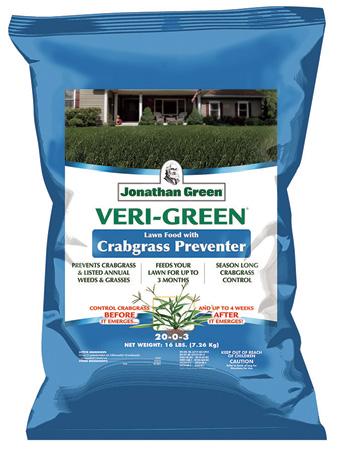



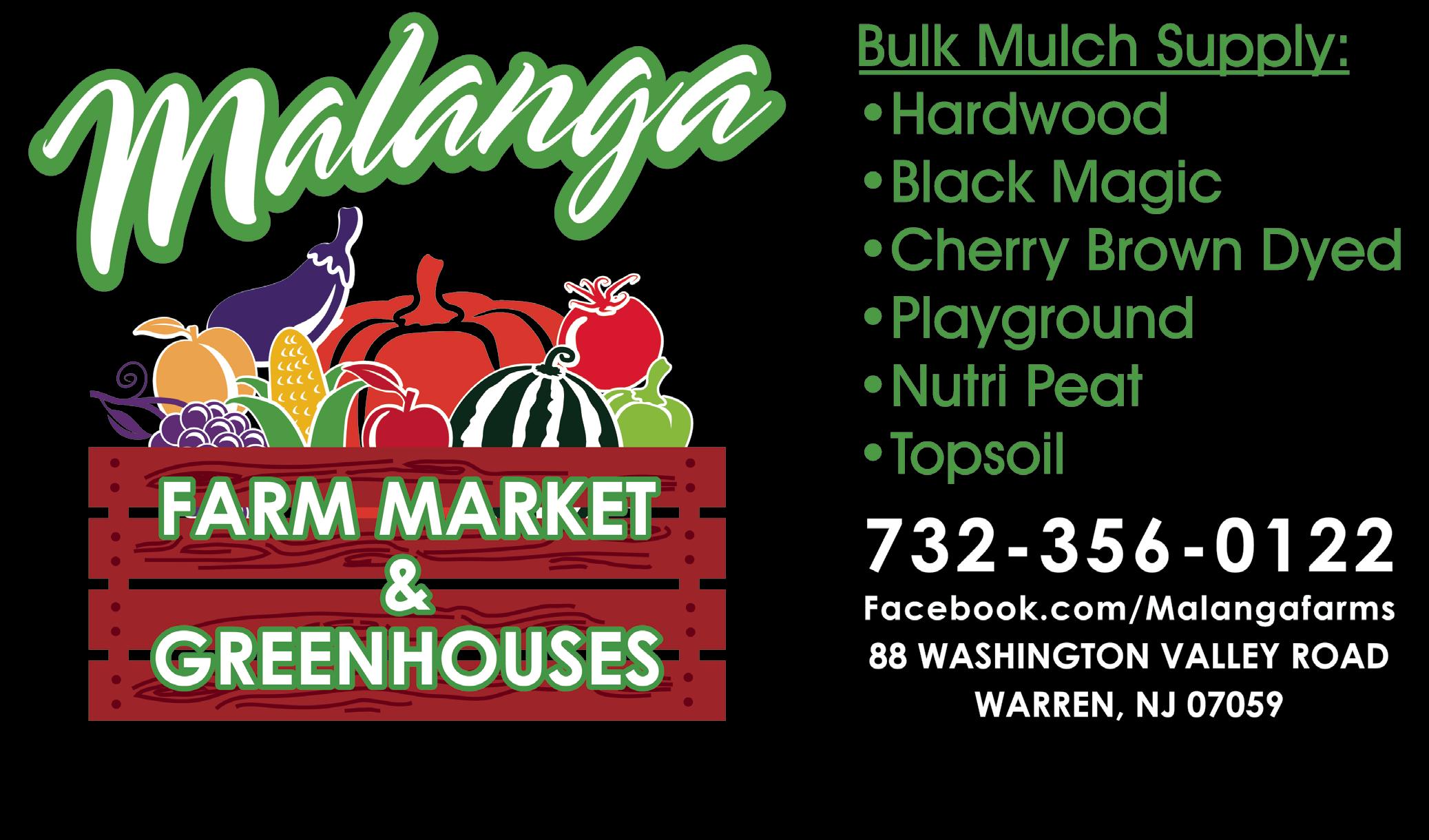
The Northeastern Association of State Departments of Agriculture convenes the following 10 states: Connecticut, Delaware, Maine, Massachusetts, New Hampshire, New Jersey, New York, Pennsylvania, Rhode Island, and Vermont.
New Jersey Department of Agriculture and USDA officials commemorated Child and Adult Care Food Program (CACFP) Week with a visit to Wishing Well Adult Day Health Care Center in Mercer County.
The visit highlighted the meal program at the Wishing Well facility in Lawrence Township, which feeds approximately 220 adults each day in two separate shifts five days a week. The morning clients receive breakfast, a morning snack, and lunch. The afternoon clients receive lunch, an afternoon snack, and dinner.
“This location is an outstanding example of how the Child and Adult Care Food Program provides needed nourishment to thousands of New Jersey children and adults,” NJDA Assistant Secretary Joe Atchison III said. “This program is a way for child and adult care centers and emergency shelters to offer nutritious meals so their constituents can develop or continue healthy eating patterns. We strongly encourage participation.”
Wishing Well was given a CACFP Achievement Award from the USDA for its outstanding work.
“Many of our clients depend on these meals and the services that we offer,” Wishing Well Managing Director Michael Kravchenko said. “CACFP greatly enhances our ability to serve healthy food to those in need and allows us to cater to the cultural dietary preferences of our clients.”
New Jersey’s 2,200 CACFP sites provide meals and snacks to 106,000 eligible participants at shelters, day care centers, family day care homes, after-school care programs and adult day care centers each weekday. There are 642 CACFP sponsors in New Jersey. Though the program is federally funded and administered by the New Jersey Department of Agriculture, a policy change as a result of the state agency discretion allowed in CACFP federal regulations helped CACFP Adult Day Care sponsors incorporate an additional $1 in daily snack meal reimbursement per participant. This assists sponsors in meeting their food service operational costs and ensures adult participants receive the highest level of nutrient dense meals allowed by CACFP federal regulations.
National CACFP Week is an educational and informational campaign designed to raise awareness of how the Child and Adult Care Food Program works to combat hunger. The program also brings healthy foods to the table for adults in day care and children in child care homes, centers, and in afterschool feeding programs across the country. Nationally, child and adult day care providers and centers participating in CACFP provide meals to 4.5 million children and adults each day.
Pennsylvania’s Agriculture Secretary, Russell Redding joined members of the General Assembly, associations and businesses at Cashman’s Hardware Store in Adams County to promote Pennsylvania’s updated fertilizer law and the Department of Agriculture’s consumer education campaign to help residents manage their lawn care in a cost-effective and environmentally sustainable way.
The revisions to the Pennsylvania Fertilizer Law, signed by Governor Shapiro in 2023, brought new responsibilities to homeowners and residents who apply fertilizer to their lawns, ensures clearer fertilizer labels to help homeowners understand fertilizer needs and avoid costly over-application, and keeps Pennsylvania on track to meet our Chesapeake Bay goals.
“The agriculture community has long balanced the need for production with the need for environmental stewardship,” said Secretary Redding. “By expanding this responsibility to all who are using and applying fertilizer, we are creating healthier soils and water in the Commonwealth, while promoting an economic savings that can be realized through reviewing and understanding nutrient management.”
Homeowners and residents are required to be aware of and to follow the nutrient application rate limits, fertilizer application location restrictions, and best management practices as specified in the law and written on the product label. Overuse of fertilizer not only harms the environment but can wastes products and can be costly to residents. The modernized law focuses on educating homeowners on proper application, preventing unnecessary spending and runoff that pollutes rivers and streams.
“Excess nutrient runoff from fertilizers can lead to increased levels of nitrates in drinking water and can harm fish and aquatic life in streams and lakes,” DEP Director of Watershed Restoration and Nonpoint Source Management Jill Whitcomb explained. “These enhancements made to the Fertilizer Law will help residents throughout Pennsylvania improve their local waters, as well as those that flow in the Ohio River, the Delaware River, and the Chesapeake Bay.”
The updates to Pennsylvania’s Fertilizer Law allow the Department of Agriculture to:
•Empower Consumers: Fertilizer labels will now be clearer, with instructions for proper use, best practices, and guidance on handling, storage, and disposal.
•Improve Reporting: Enhanced reporting will help track fertilizer use and ensure Pennsylvania meets environmental goals.
The Department has launched a consumer awareness campaign through the Bureau of Plant Industry, working with partners like Penn State Extension, the State Conservation Commission and the PA Landscape and Nursery Association, to connect residents with education, support, and resources to effectively and efficiently their use of fertilizer and other nutrients.
“Educating consumers on the proper way to apply lawn fertilizer and at appropriate rates will not only protect our water quality in Pennsylvania, but will result in a healthier lawn,” said Gregg Robertson of the Pennsylvania Landscape & Nursery Association. “Research by EPA has shown that a healthy lawn will reduce runoff of nitrogen, phosphorus and sediment into our rivers and streams.”
Learn more about the Pennsylvania Fertilizer Law and how we each can be good stewards of our land at agriculture.pa.gov/fertilizer.
Farmland owners and farmland seekers across Connecticut now have greater access to resources through a redesigned website and refreshed logo for CTFarmLink. org. CT FarmLink is a collaborative effort between Connecticut Department of Agriculture (CT DoAg), Connecticut Farmland Trust (CFT), and other partners which acts as a clearinghouse for the transition between generations of landowners with the goal of keeping farmland accessible and in production.
“Access to land and the ability to purchase it have been leading barriers for new and beginning farmers in agriculture,” said Bryan P. Hurlburt, Connecticut Department of Agriculture Commissioner. “Through this program partnership, we are seeking to keep agricultural land in production while better equipping those entering farming for a successful future.”
CT FarmLink provides resources to assist those searching for land to farm or those seeking successors to keep farmland in production. Navigating this process can be complex, however, with the tools and resources available, including the opportunity to book an in-person consultation through the website, it’s now become easier than ever to achieve agricultural success.
The website allows farm owners and farm seekers to create profiles and communicate with one another with the goal of matching farmland seekers with available parcels for lease, standard sale, or partnerships. Additional resources available span from new farmer information and financing options to evaluation of land resources and farm succession planning. The website is now mobile friendly allowing users to access services and information on the go.
The New York State Department of Agriculture and Markets today announced that $1 million has been awarded to 22 organizations across the state through Round 2 of New York State’s Urban Farms and Community Gardens Grant Program. The program is designed to support community growing spaces and recognize their impact on local food resiliency and food security for New Yorkers. Funding for the program was included in the FY 2023 Enacted Budget and is a part of Governor Hochul’s 2023 State of the State commitment to making local food more accessible to all New Yorkers.
State Agriculture Commissioner Richard A. Ball said, “Our community growing spaces are a critical part of our neighborhoods and to ensuring more New Yorkers have access to fresh, nutritious foods. I thank the Governor for recognizing the unique needs that our urban farms and community gardens serve and the role they play in ensuring a strong, reliable food supply. Congratulations to all of our awardees; we look forward to seeing the expansion and enhancement of these farms and gardens.”
Funding was awarded to 22 urban farms and community gardens across the state for projects that focus on food production, food safety, and food distribution while also creating a lasting impact on local food resiliency. Awards will help the organizations managing these spaces to expand gardens, build structures, purchase equipment, and establish educational programs.
Learn about the recipients at https://agriculture.ny.gov/news/state-agriculture-department-announces-1million-awarded-urban-farms-and-community-gardens
The Massachusetts Department of Agricultural Resources (MDAR) is awarding over $205,000 to help farmers markets grow and expand their outreach to consumers. MDAR is awarding funding to 23 organizations representing 31 farmers markets through the Farmers Market Sustainability Grant Program. The new program provides funding to organizations that operate farmers markets to enhance their marketing, promotion, consumer education, planning and infrastructure efforts.
In Massachusetts, farmers markets play an important role in providing and expanding access to fresh, healthy, and local food to residents. They provide a vital link for the public to buy directly from local farmers and growers.
“Farmers markets have been around for centuries and have embedded themselves into the fabric of our culture, heritage, and economy,” said MDAR Commissioner Ashley Randle. “Many Massachusetts farmers’ income comes from direct-to-consumer sales at farmers markets and other venues. It’s critical that we help promote and support our local entrepreneurs to foster a more equitable food system. These grants will go a long way to ensuring our farmers markets continue to thrive for years to come.”
Along with the local produce and food that they provide, farmers markets serve as dynamic community spaces where the public can learn more from farmers about the local food system and how their food is grown. Many provide family-friendly activities like live cooking demonstrations, live music, and other fun entertainment programming. More importantly, farmers markets allow consumers to understand and recognize the hard work that goes into growing and harvesting food.
Many farmers markets in Massachusetts are proud participants in the Supplemental Nutrition Assistance Program (SNAP), Healthy Incentives Program (HIP), and the Special Supplemental Nutrition Program for Women, Infants, and Children (WIC), which all serve low-income communities by providing them with increased access to fresh produce. Additionally, the Senior Farmers Market Nutrition Program (FMNP) is a highly popular seasonal, annual program that provides low-income seniors with coupons to purchase fresh, locally grown fruits, vegetables, fresh-cut herbs, and honey from Massachusetts farmers. Every year, coupons are spent at over 300 farmers’ markets and farmstands across the state.
More than 220 summer/fall farmers markets operated in 2023, with 49 winter farmers markets opening over this past winter in Massachusetts. Consumers looking for a farmers market location near them can visit MDAR’s MassGrown map at www.mass.gov/massgrown.

Hello Gardener News readers. The warmer weather is upon us and that means grilling is back! This month, I am sharing my Cedar Plank Salmon recipe. Cedar Plank Salmon is a popular dish in North America, with the wood infusing the salmon meat with the flavors of cedar. Several types of salmon are available including Atlantic salmon and a variety from the Pacific. Atlantic salmon always tastes the same, so if this is a significant part of your diet, cooking it over a cedar plank will add variety.

The taste of Pacific Salmon is more interesting; however, some types of salmon out of the Pacific are low in fat and thus lack flavor. Chum Salmon and Pink Salmon have the lowest amounts of fat and are inexpensive, with Chum Salmon often being sold frozen in the supermarket. Infusing these low-fat filets with cedar aromas will make up for the lack of fatty flavor.
Coho Salmon has a moderate amount of fat but has less fat than Atlantic and also makes a good candidate for this dish. Chinook or King Salmon is the fattiest salmon you can buy, and because it is so tasty, it does not need much additional flavor.
For ingredients, gather 2 tablespoons grainy mustard, 2 tablespoons mild honey or pure maple syrup, 1 teaspoon minced rosemary, 1 tablespoon grated lemon zest and 1 (2-pounds) salmon fillet with skin (1 1/2 inches thick). You will need a cedar grilling plank (about 15 by 6 inches) for preparation.
Start by soaking the cedar grilling plank in water, keeping it immersed
for two hours. Prepare the grill for direct-heat cooking over medium-hot charcoal (medium-high heat for gas). Then stir together the mustard, honey, rosemary, zest, and 1/2 teaspoon each of salt and pepper. Spread this mixture on flesh side of salmon and let it stand at room temperature for 15 minutes.
Next, place the salmon on the plank, skin side down (if salmon is too wide for plank, fold in the thinner side to fit). Place on the grill, covered with a lid, until the salmon is just cooked through and the edges are browned, 13 to 15 minutes. Let the salmon stand on the plank for 5 minutes before serving. Fresh lemons and parsley garnish will finish it nicely.
As an accompaniment, I like to make a delicious grilled vegetable tartine. Ingredients are 1 medium (8-inch) zucchini, 2 medium red or yellow bell peppers, 1 medium red onion, 1 tablespoon extra virgin olive oil plus extra for bread, 1/2 teaspoon kosher salt, plus more to taste, freshly ground black pepper to taste, 1 large round loaf crusty bread such as sourdough or Italian, 4 ounces (chèvre) fresh mild goat cheese, 1/2 lemon and 2 tablespoons fresh mintfinely chopped.
Preheat your grill, aiming for medium-high heat, about 400°F if using a gas grill. Prep the veggies by cutting the zucchini on the diagonal into 1/4-inchthick slices. Cut the peppers in half through the stem end. Remove the stem and seeds and cut into 1/2-inchthick pieces. Peel the outer
skin off the onion and cut into 1/2-inch-thick rounds, keeping the rings intact.
Next, lay the vegetables on a baking sheet, keeping the onions, peppers, and zucchini grouped separately, and drizzle with the olive oil. Season with 1/2 teaspoon salt and fresh black pepper to taste. Gently coat the veggies with the oil and seasonings. Set aside until ready to grill.
Cut 4 1/2-inch-thick slices from the center of the bread so they are generous in size. Brush lightly with olive oil and season both sides with a pinch of salt. Brush the grill grates with oil. Lay the peppers and onions on the grill and cook, turning occasionally until the vegetables are lightly caramelized, glossy, and tender. When the peppers and onions are nearly done, add the zucchini and bread onto the grill. Grill until the zucchini is striped with grill marks on both sides and the bread is lightly browned around the edges, about 2 minutes.
To assemble the tartines, spread the goat cheese over the surface of the bread. Lay the zucchini, peppers, and onion on top. Squeeze lemon juice over top and season with salt and black pepper, to taste. Scatter with the fresh mint and serve immediately.
For the wine pairing, oaked and creamy white wines like Chardonnay and Viognier pair well with this dish as the wines complement the salmon’s wood-smoked infused flavors. Meanwhile, red wine drinkers can choose a light and fruity Pinot Noir. Enjoy!

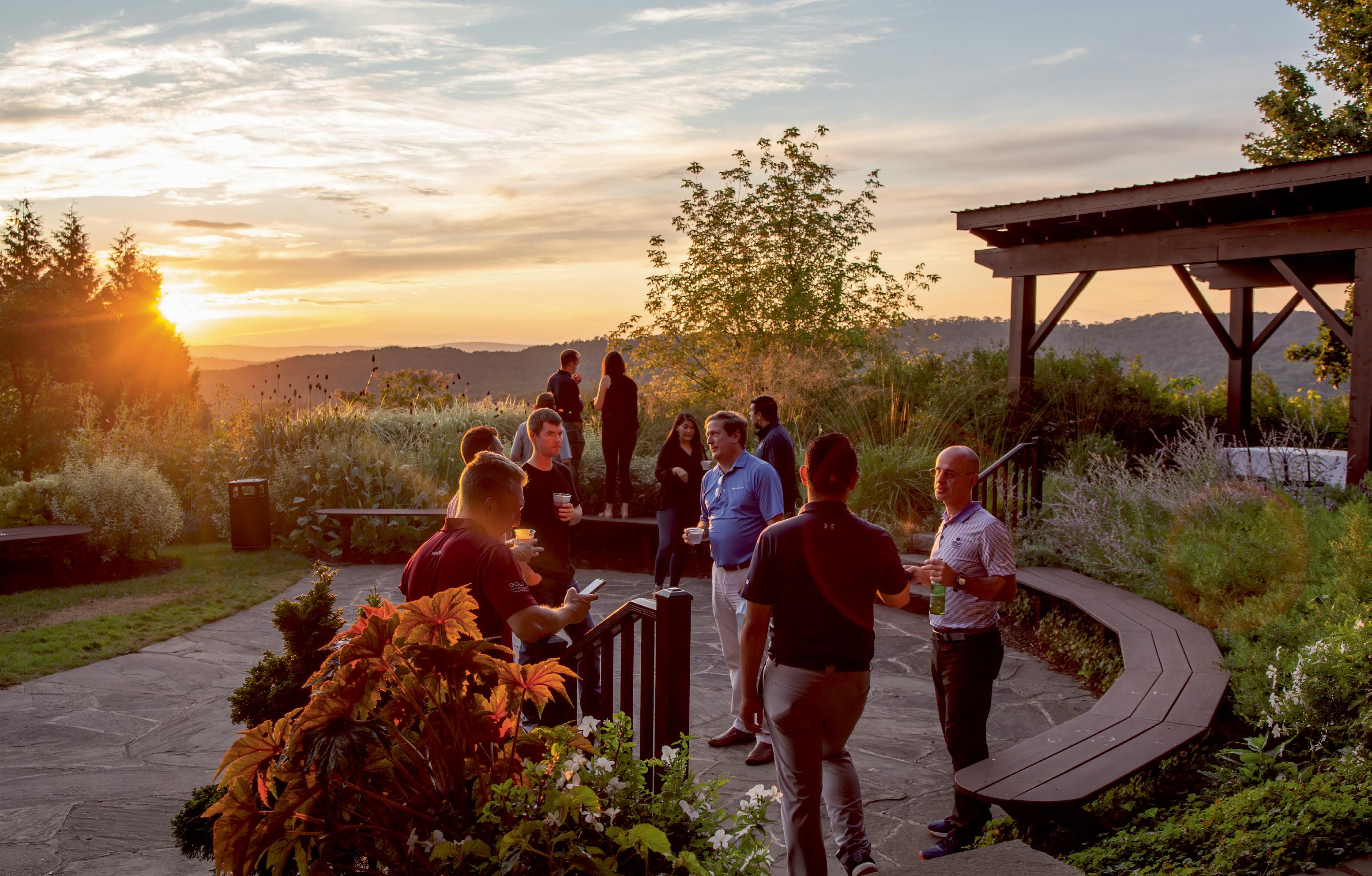






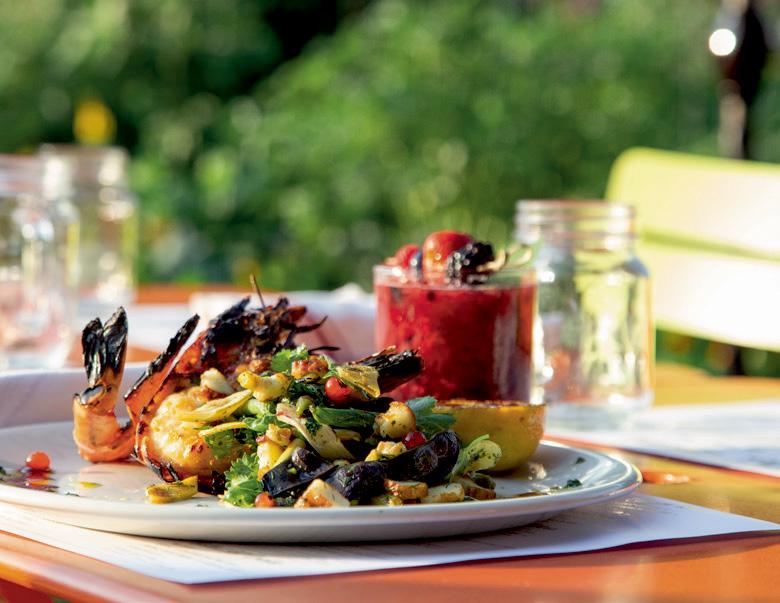





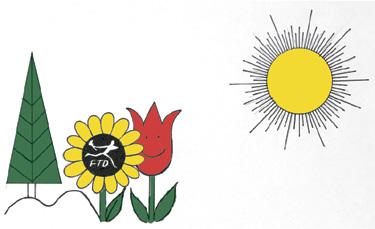





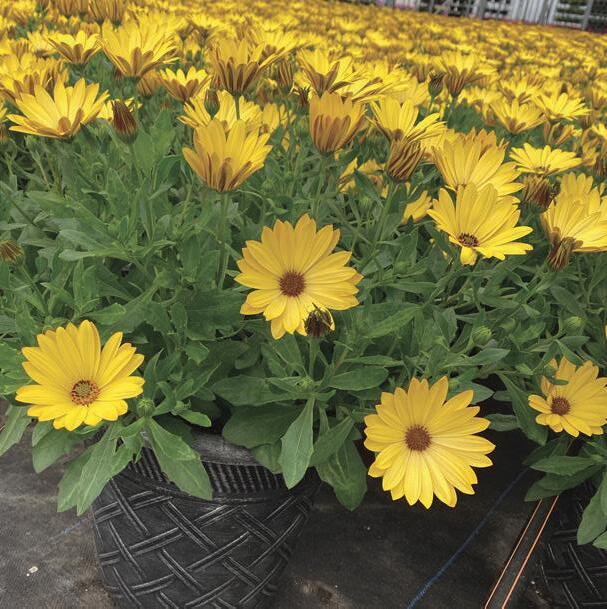
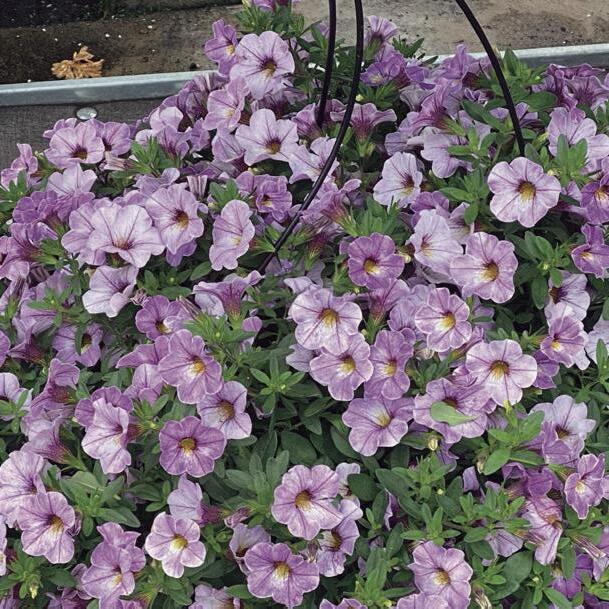


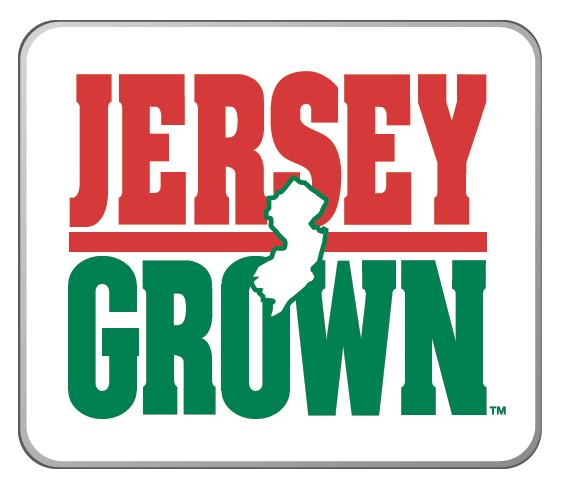






7500-G SERIES ZERO-TURN
96” TURBO FORCE ® CUTTING DECKS
PRODUCTIVITY TO A NEW LEVEL
Impressive 96” wide cutting deck folds to 75” to fit in most trailers. Vented hood keeps the engine cool with direct air induction from the top. Comes standard with Horizon Technology to help choose the right operating mode for mowing conditions.
ALL DAY PERFORMANCE
The fully interchangeable 60V Max* Flex-Force battery system powers the entire line of Revolution commercial grade handheld tools. The backpack, available as a power source for the leaf blower, string and hedge trimmers, and is built for comfort and ready to keep jobs moving all day.
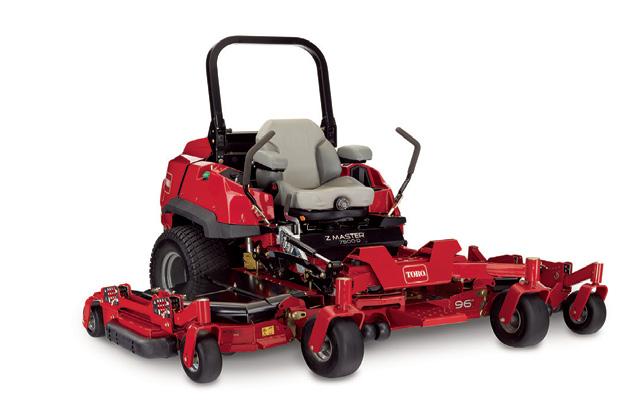
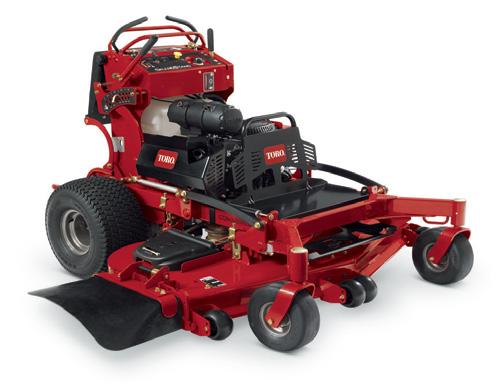
36”-72” TURBO FORCE ® CUTTING DECKS
TRACTION & HANDLING
A wide stance and optimal balance enhance hillside stability and control.
CUSHIONED SUSPENSION
Flex-Ride operator platform suspension self-compensates for operators of all sizes, resulting in less fatigue and higher productivity throughout the day.
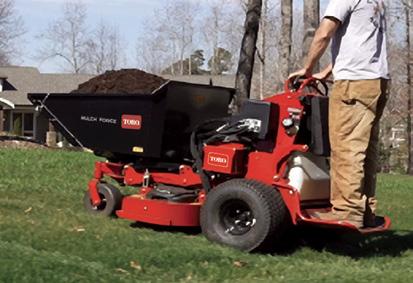
WITH MULCH DUMP
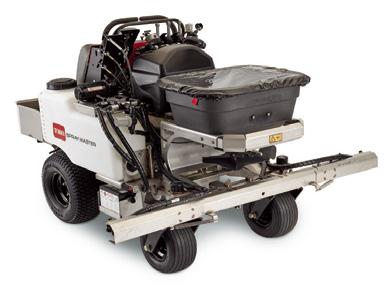
STAND-ON TURF RENOVATION
Dual Smart Hour Meters and Lean-to-Steer Provide Precision Dispersement White Tanks Simplify Fuel Level Monitoring
TURFMASTER® HDX
30” WIDE AREA WALK POWER MOWER Commercial-Grade
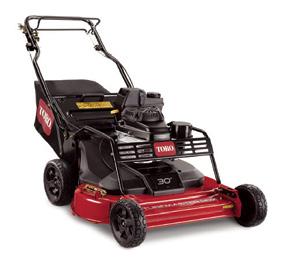
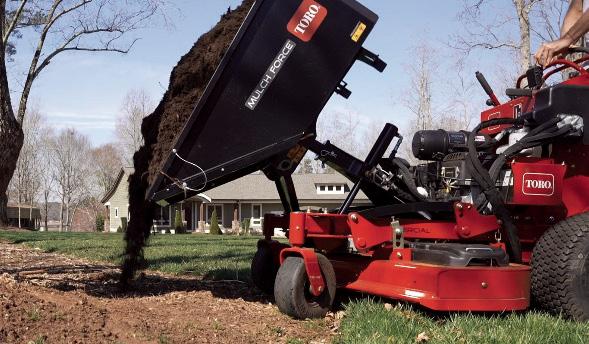
ALL-SEASON USE
A variety of attachments and accessories such as Mulch Dump, Pro-Force blower, snow thrower, power broom, tine rake, dethatcher and BOSS snow blade all provide the ultimate in productivity.
PROLINE™ MID-SIZE MOWERS
36”-60” CUTTING DECKS
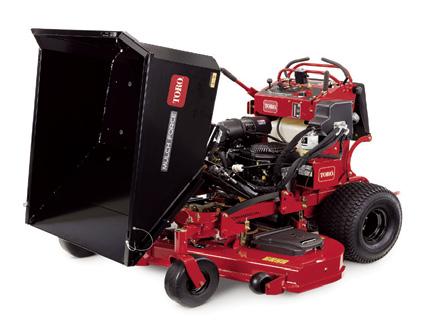
NO-HASSLE SULKY 2-wheel sulky rotates 360º and folds away when not in use; no need to remove for trailering!
MOWING MUSCLE
Reliable Kawasaki engines drive .204” blades for a gorgeous, professional cut.
your local servicing Toro dealer at Toro.com/local
